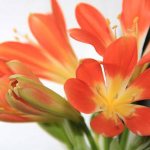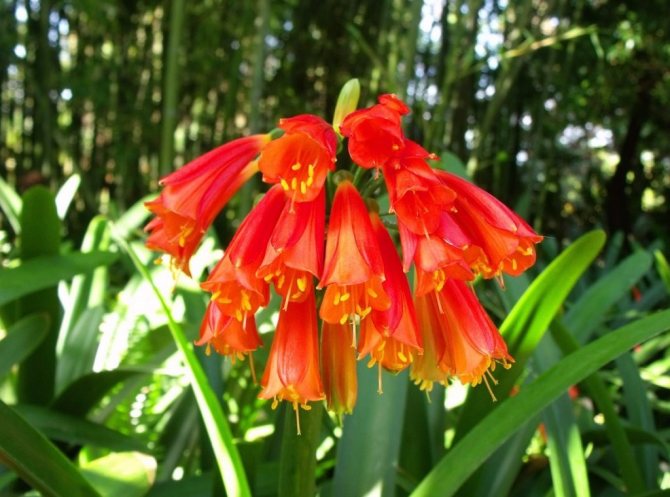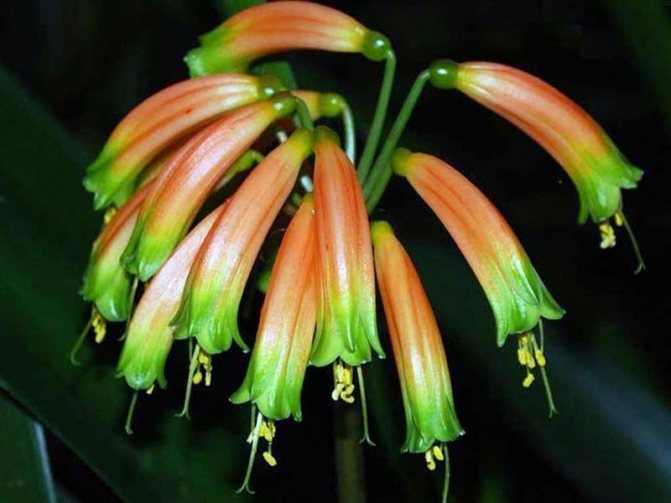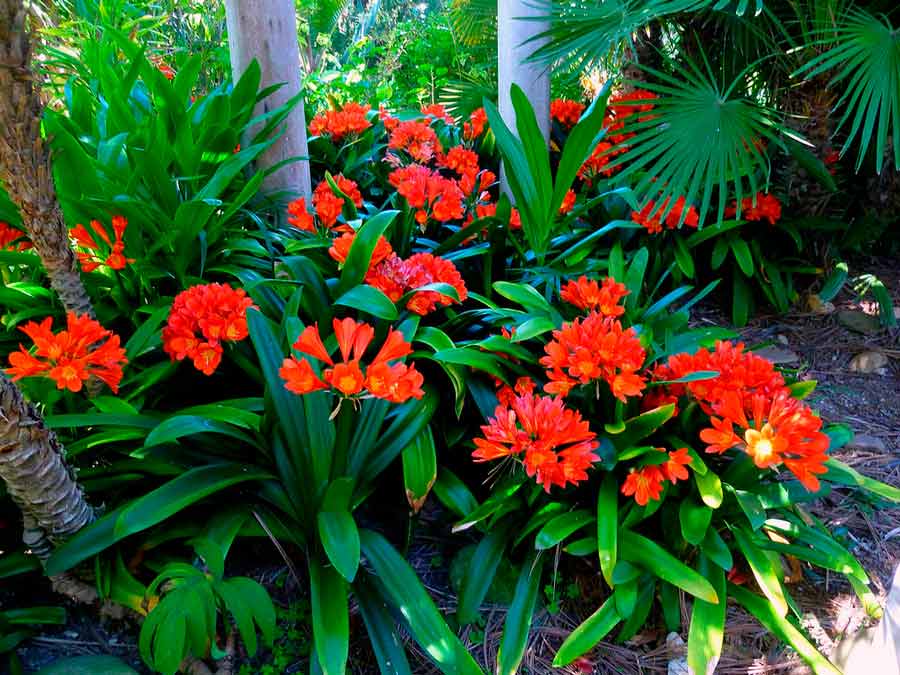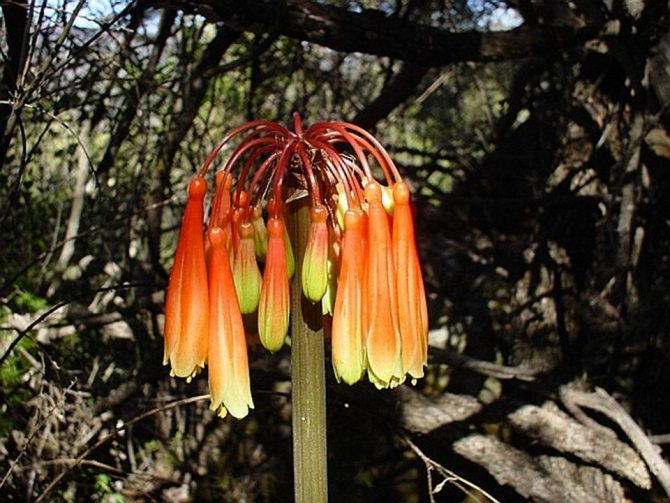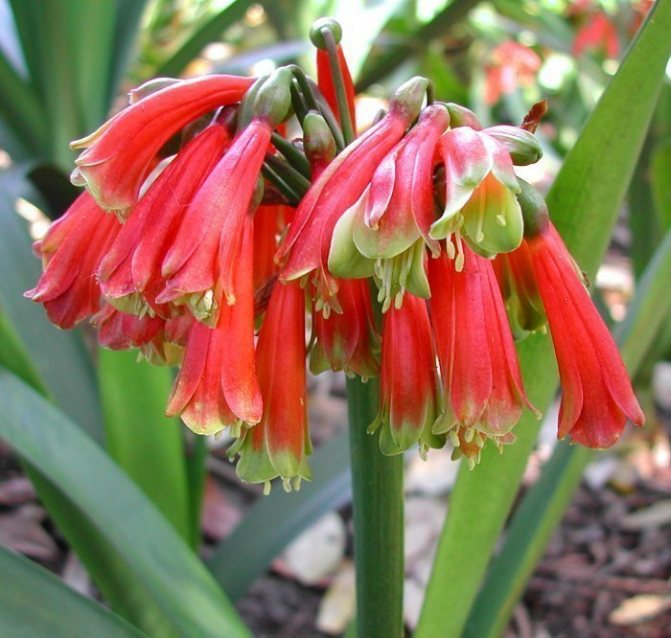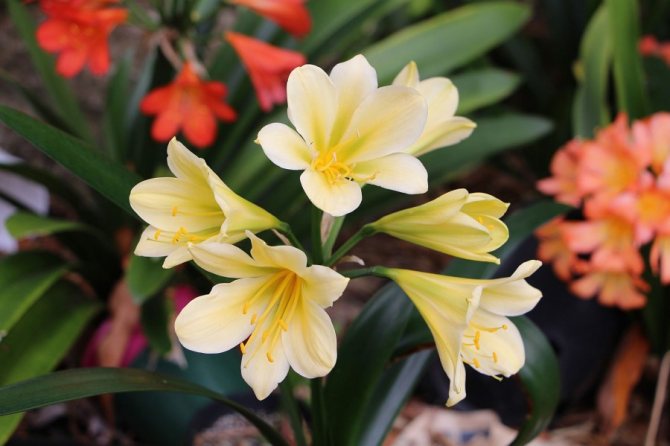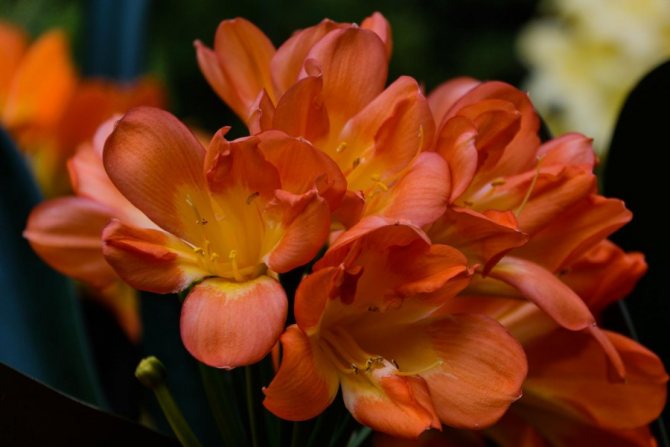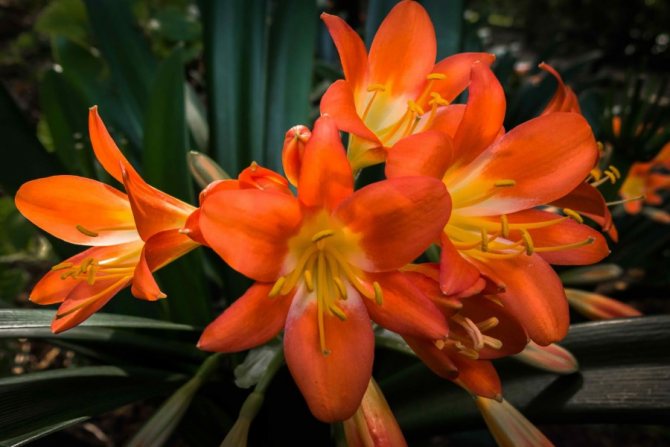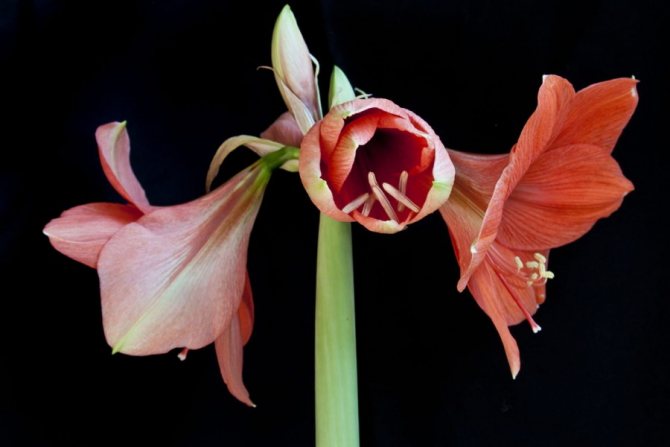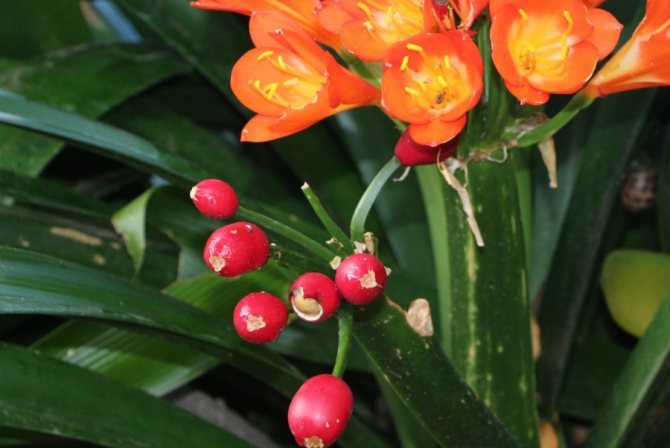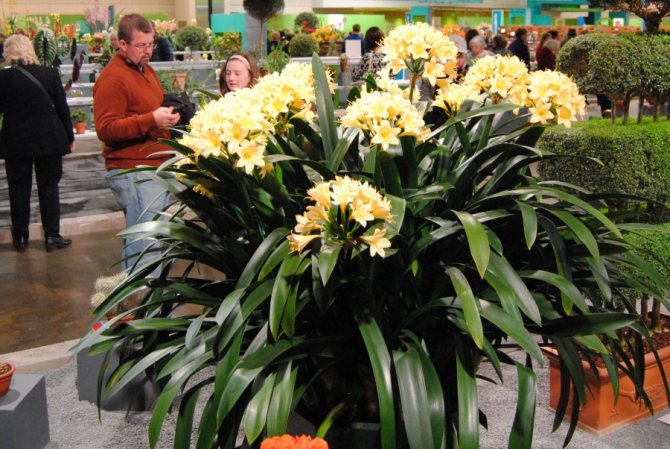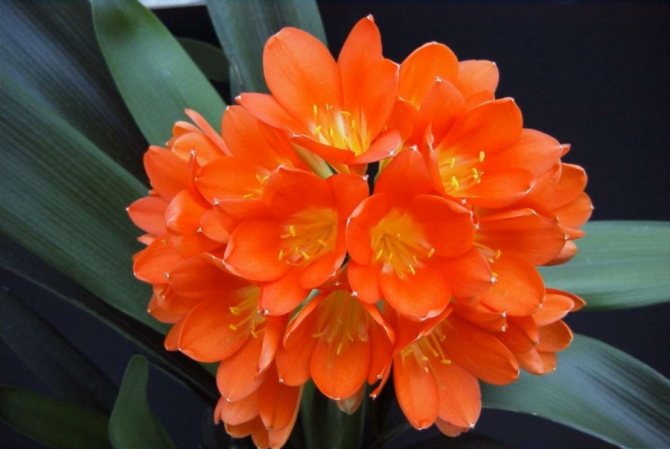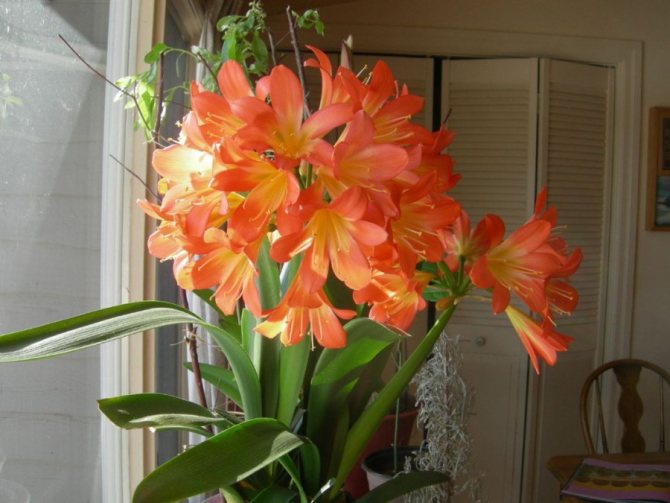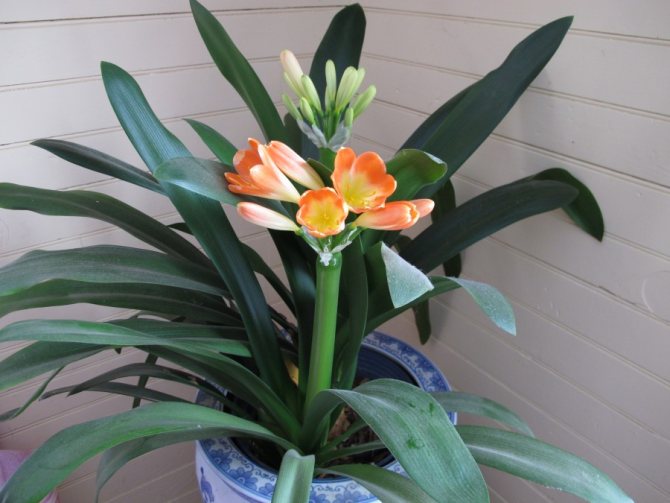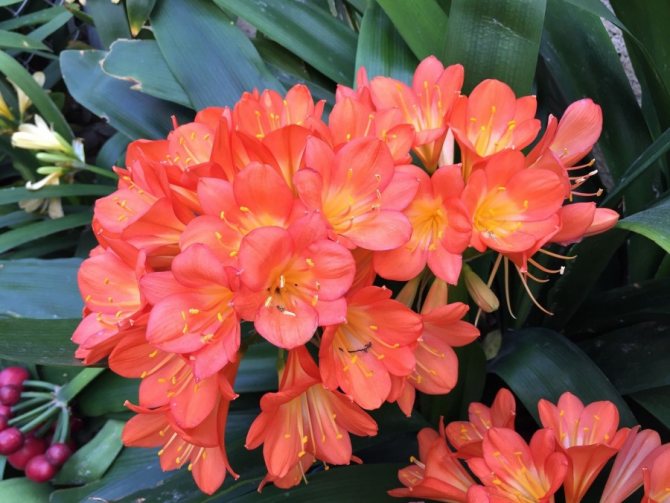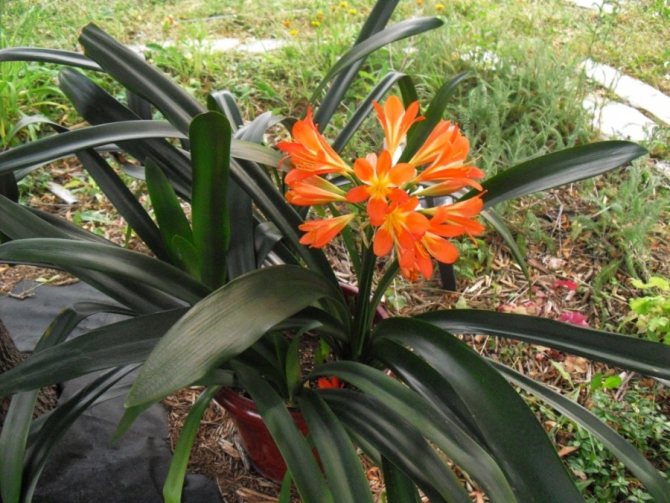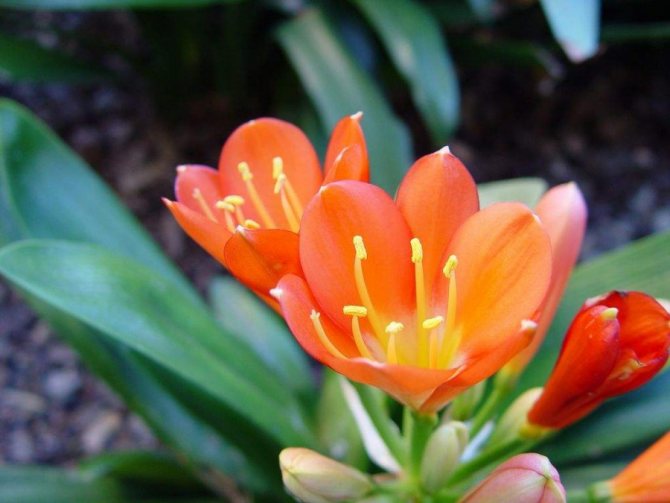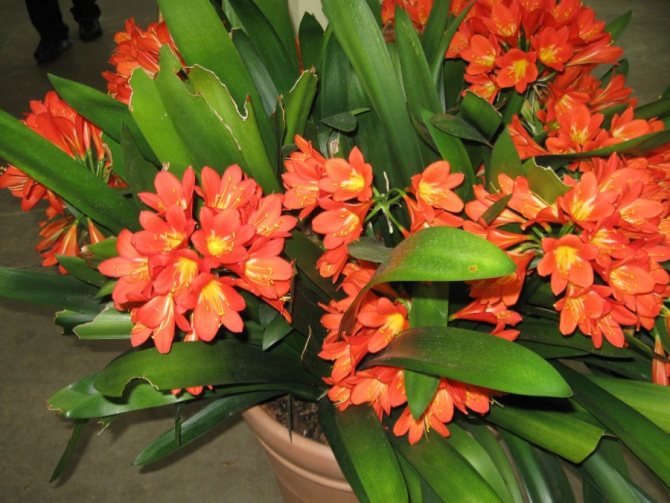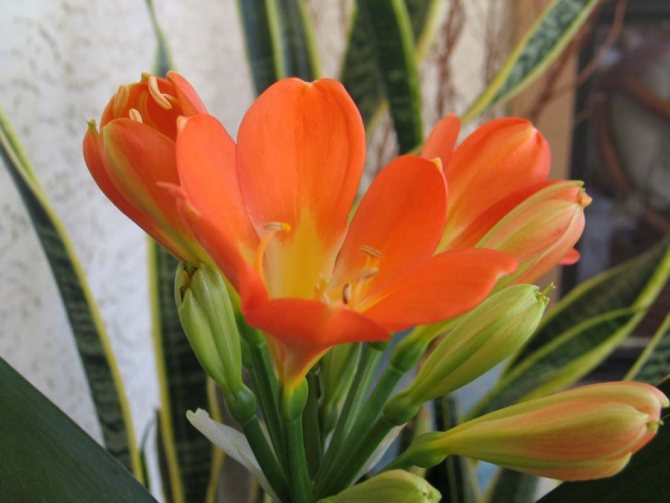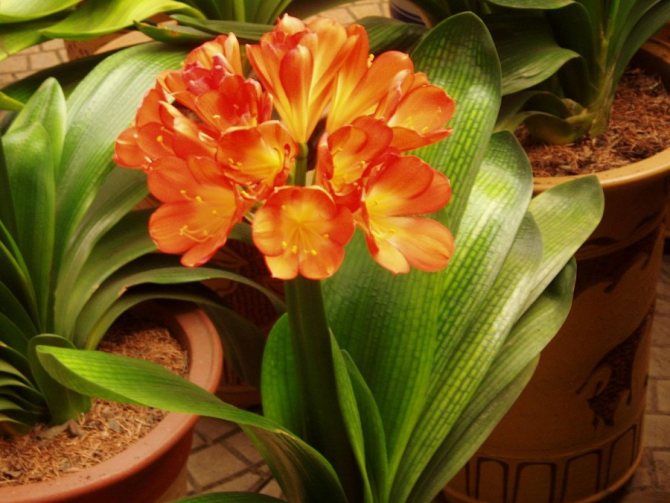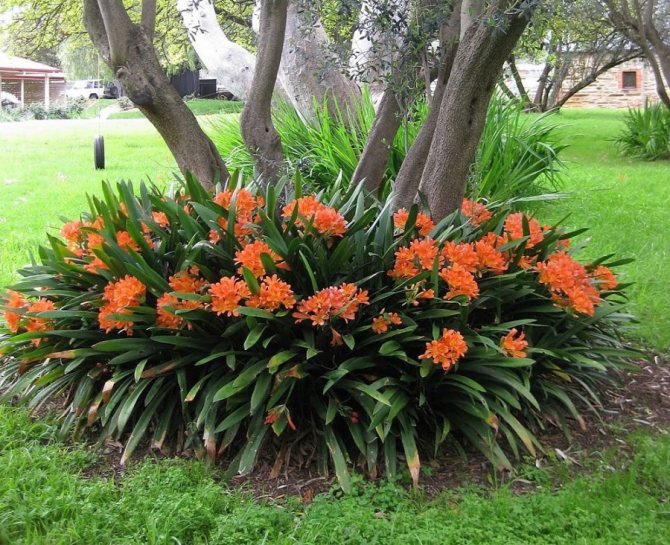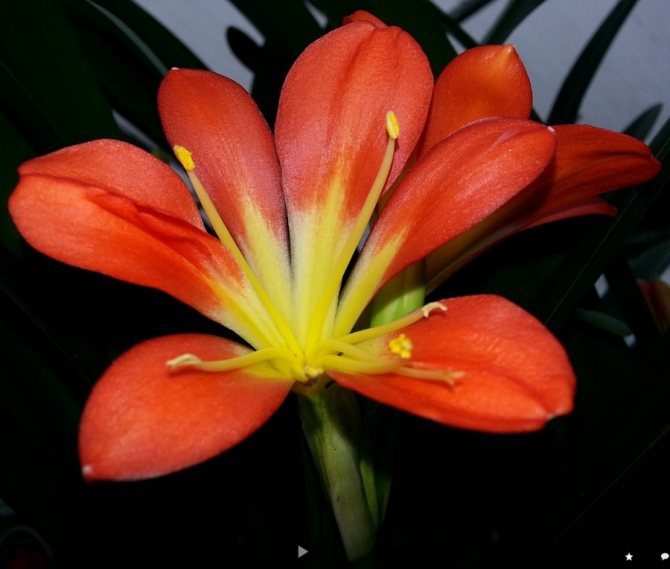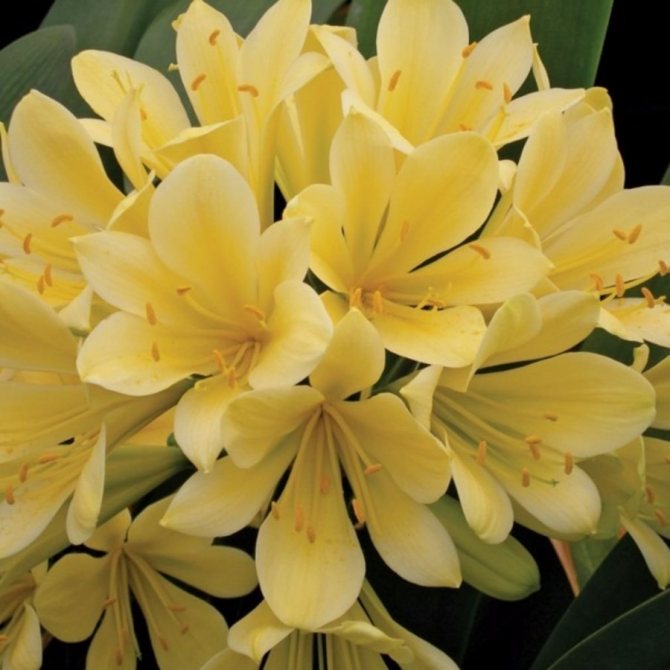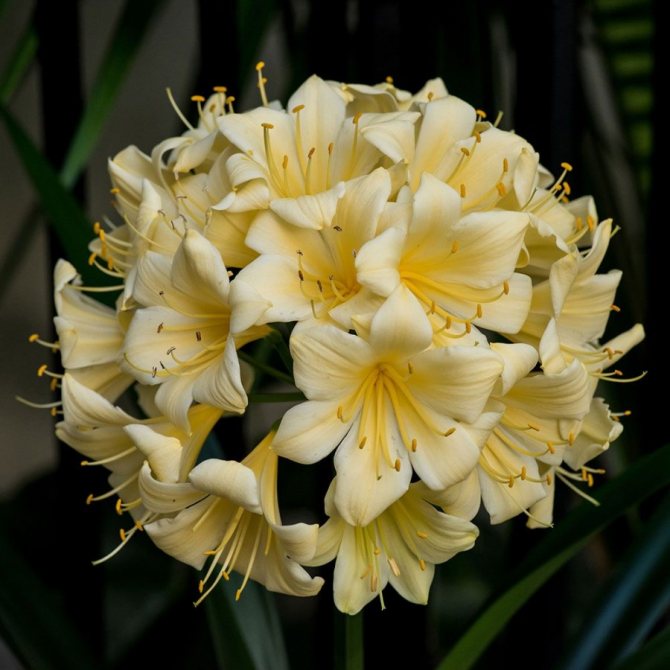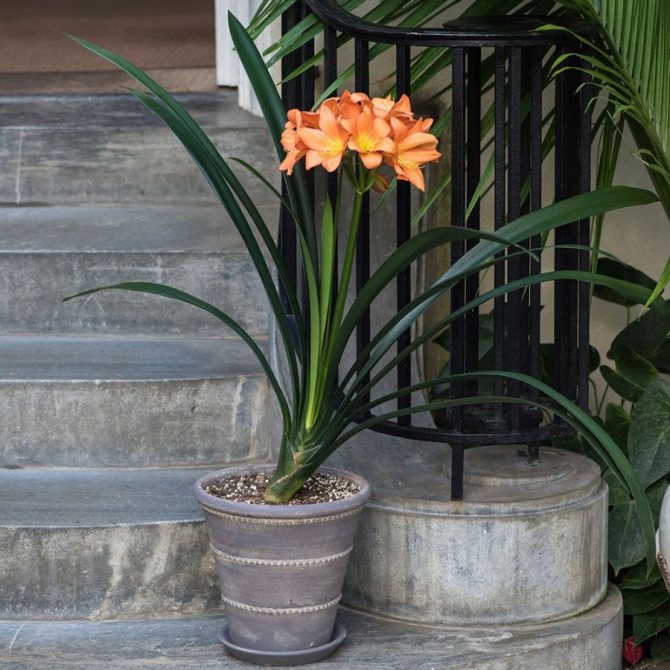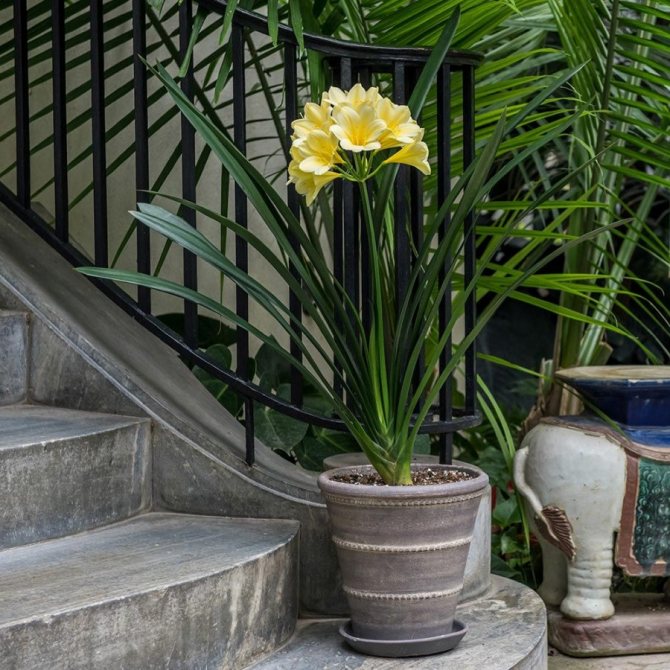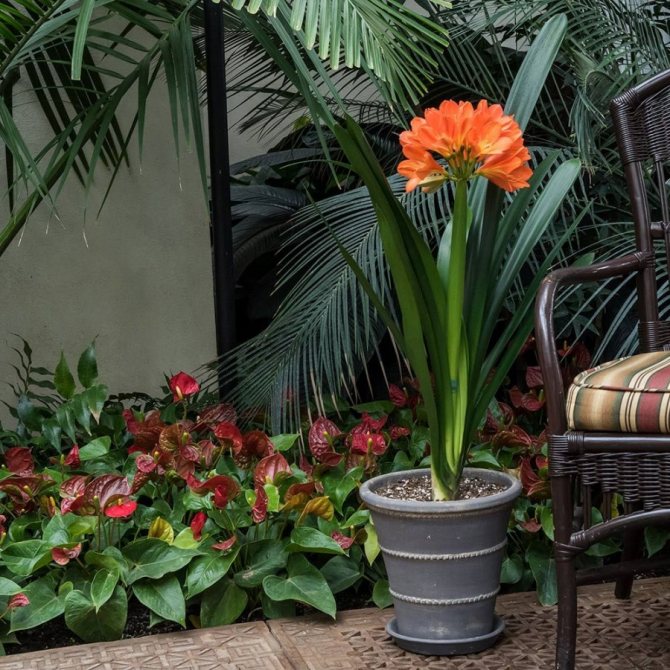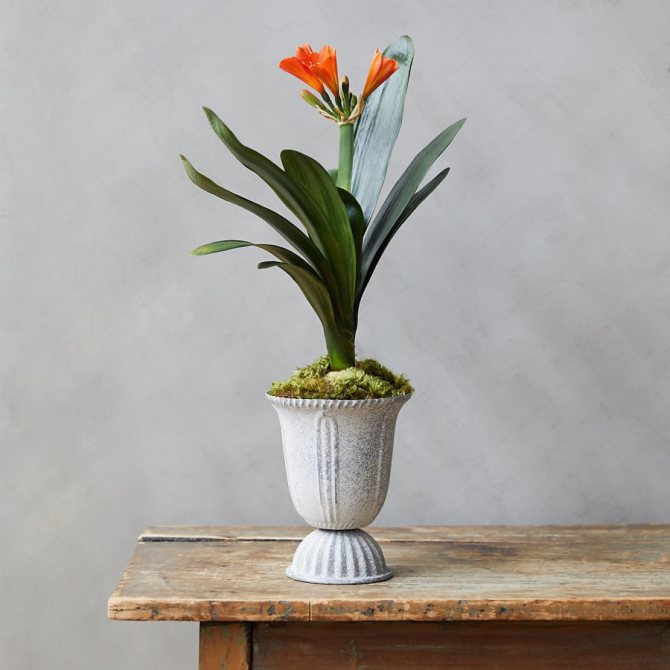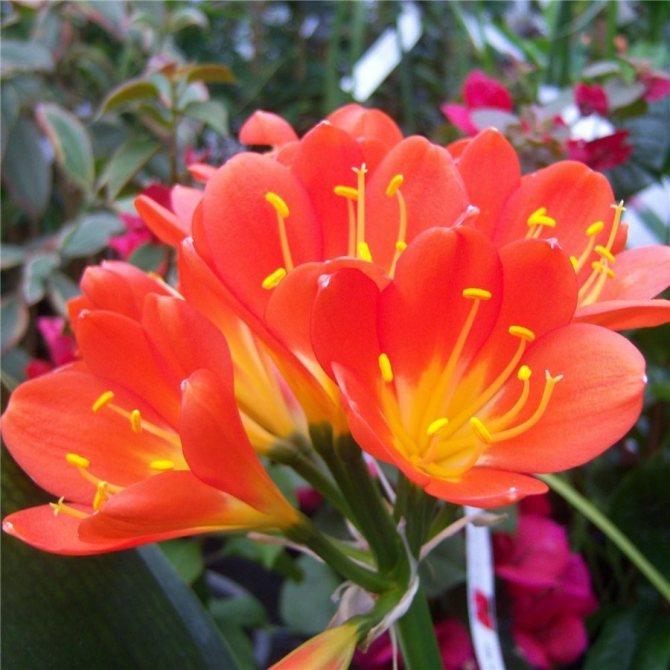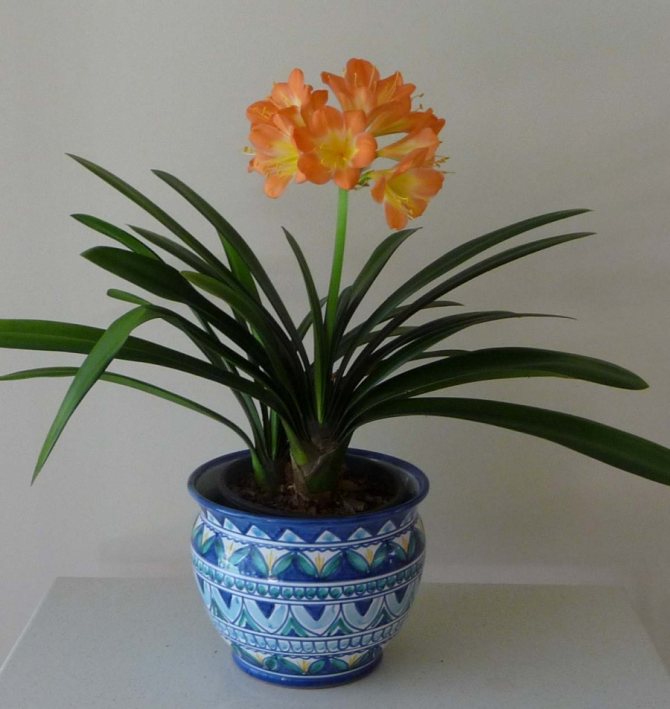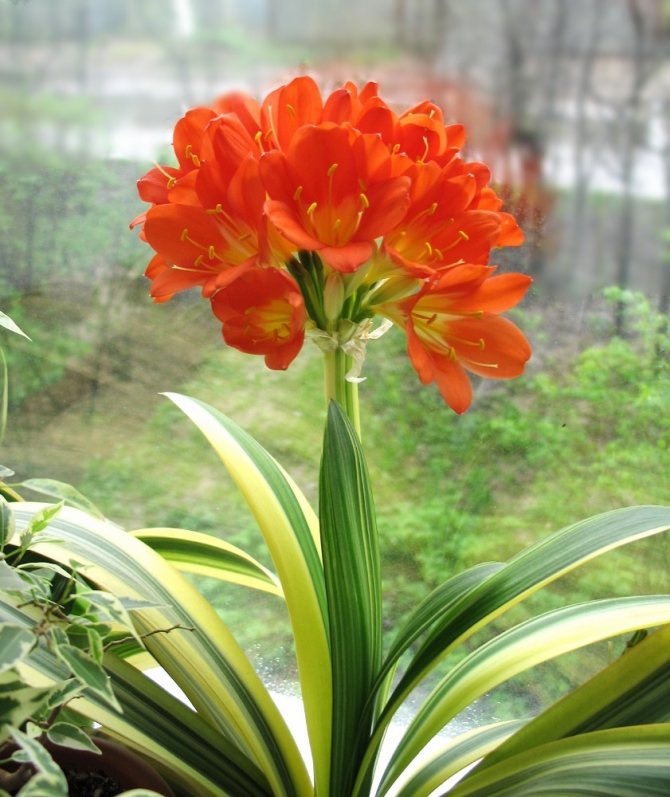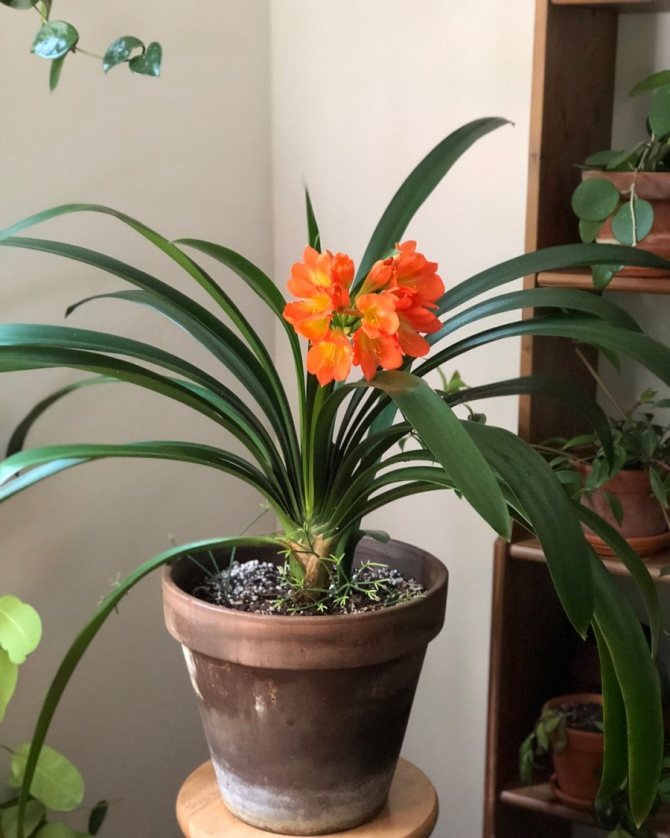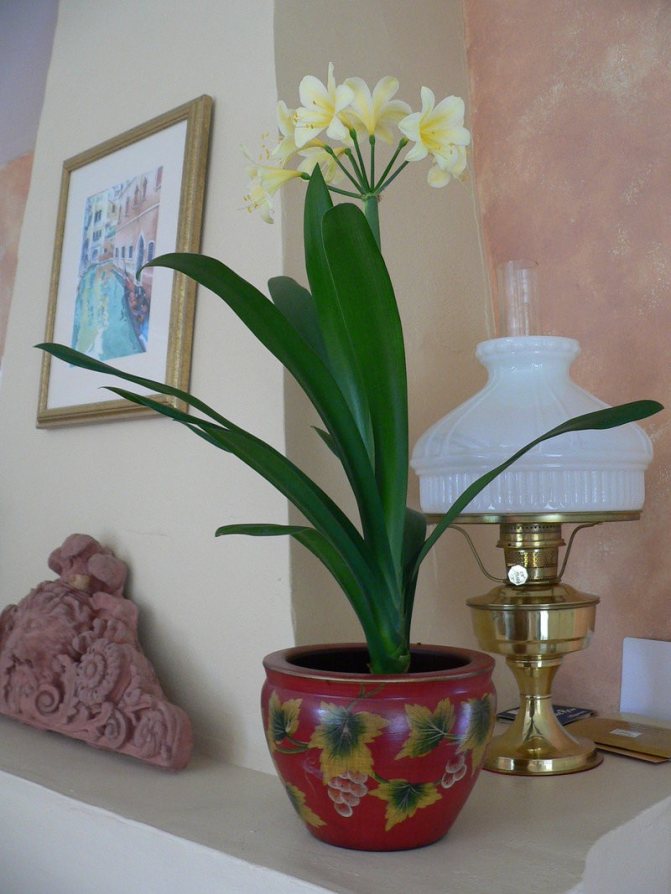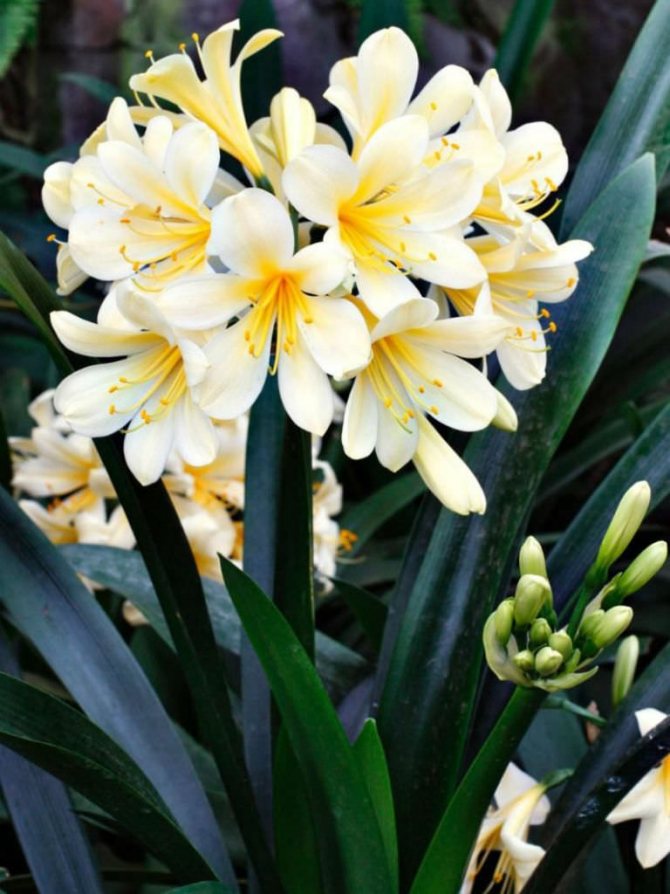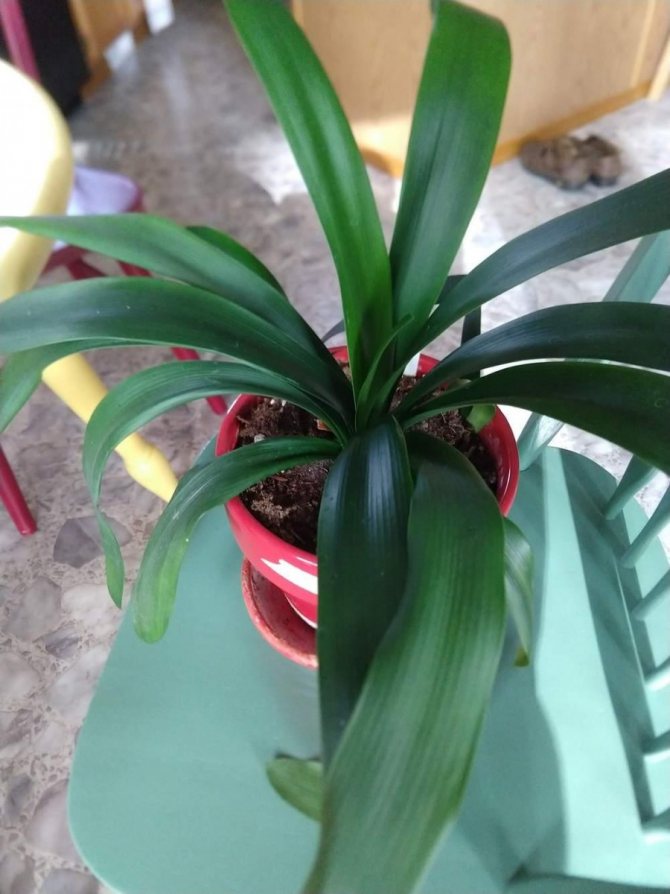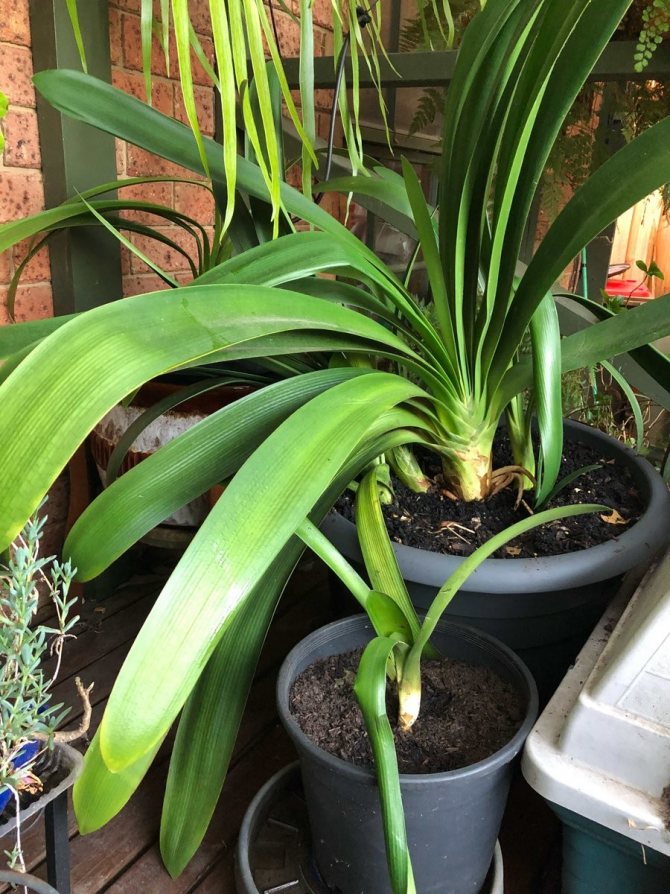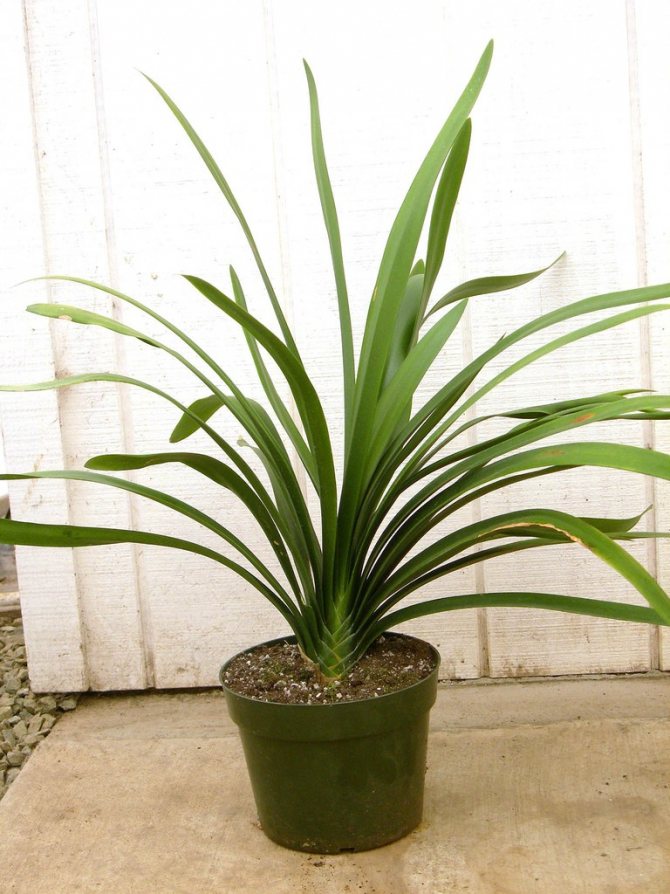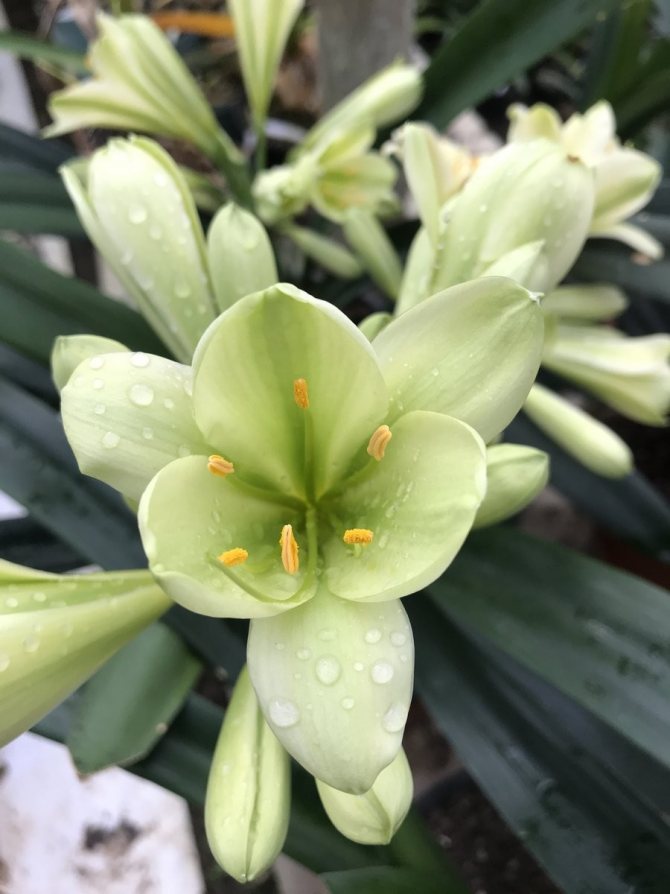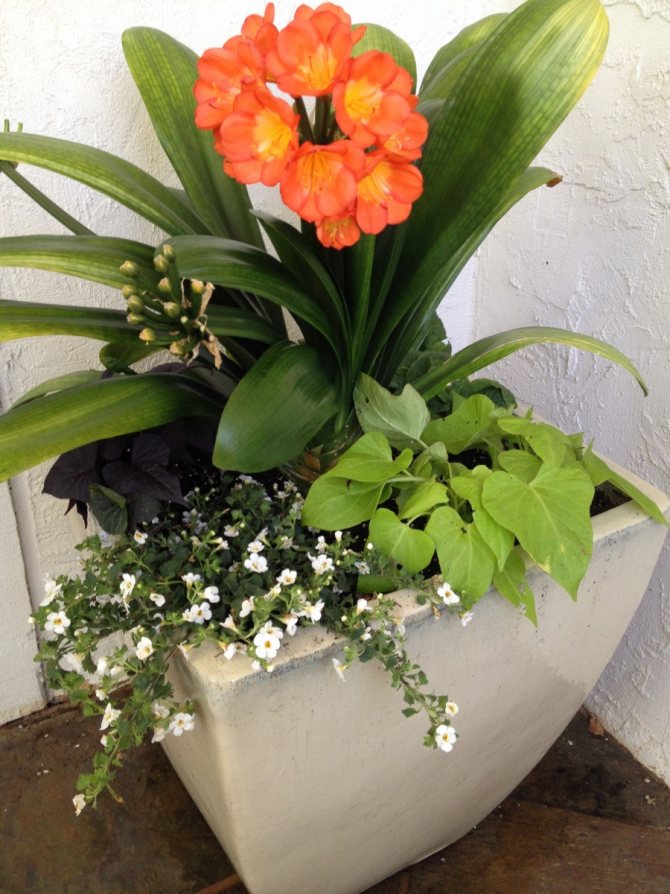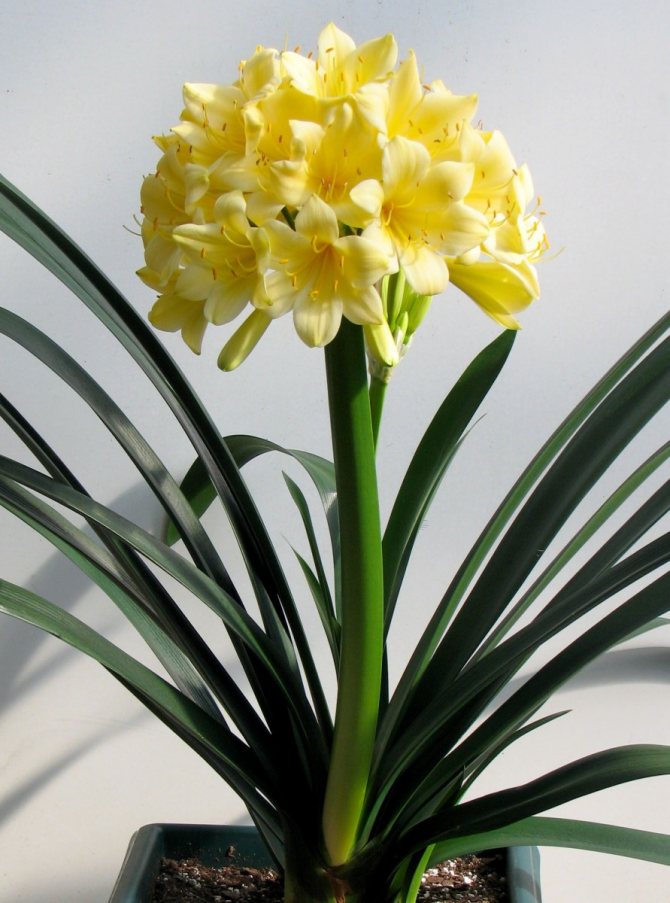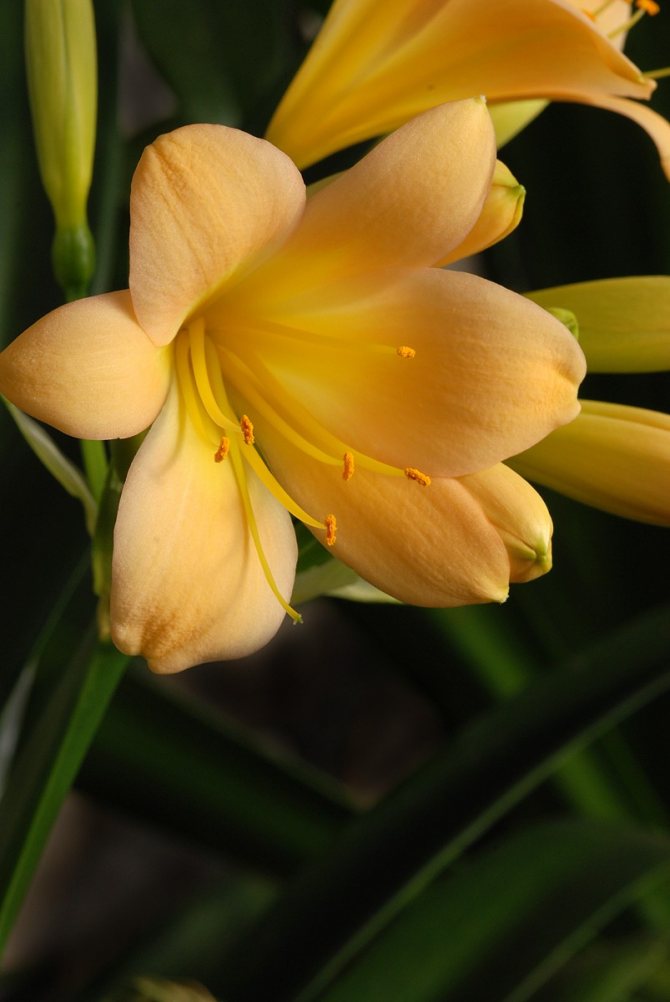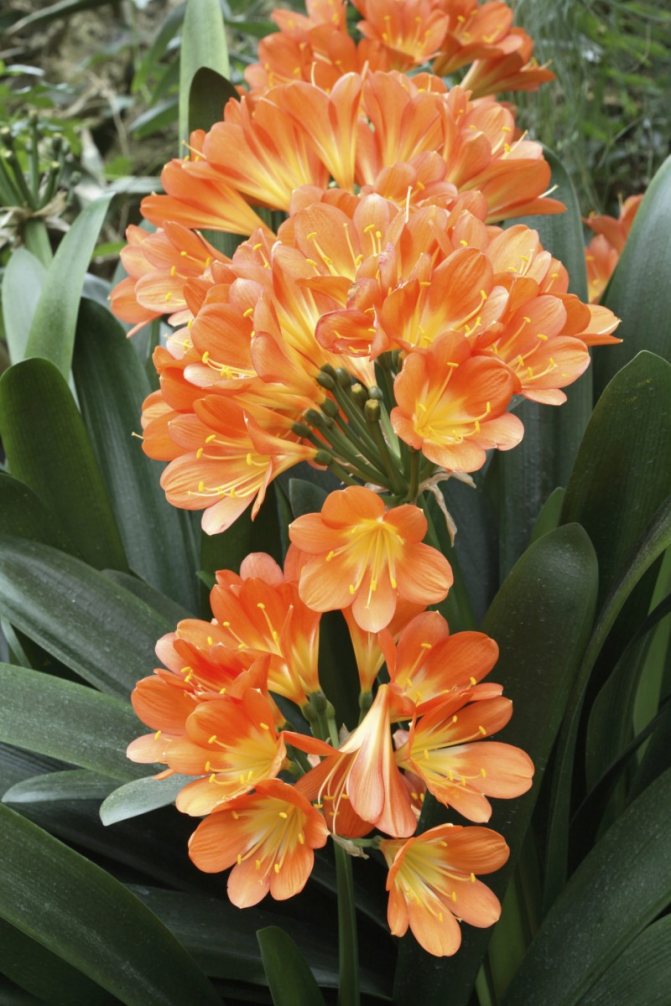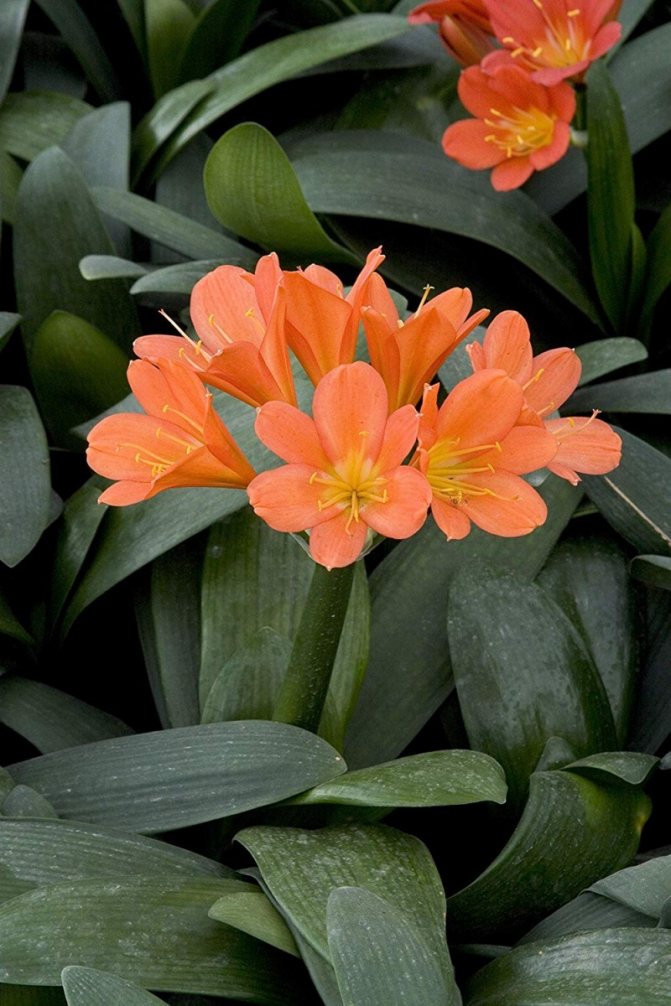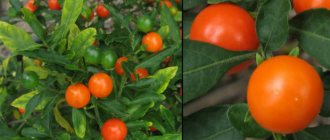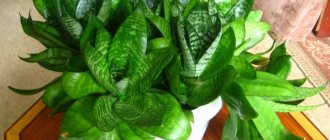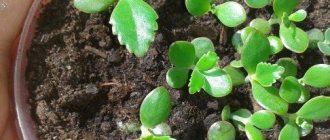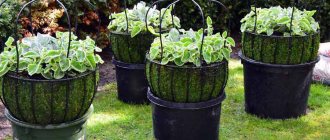The beauty of clivia is loved by many flower growers not only for its bright large inflorescences, organically complemented by dark green fleshy leaves, but also for its unpretentiousness. Caring for clivia at home is not difficult. The main thing is to create favorable conditions for a tropical plant - good illumination, normal humidity and a comfortable temperature. In order for the clivia to please from year to year with its incredibly beautiful inflorescences, it is necessary to provide it with a dormant period in the fall, which usually covers October and November. The culture has many varieties, however, cinnabar clivia is mainly grown in apartments.
A flower named after a woman
Clivia is a stemless indoor evergreen with long, dark green leaves. False stem is formed from basal leaves, tightly covering each other. Domestic clivia reach a height of about half a meter, the flowers of the plant are collected in umbellate inflorescences with a diameter of about 20 cm. Flowering lasts about a month.

In nature, clivia grows up to a meter in height.
The name of the plants of this genus was given by the botanist John Lindley. The flower was named in honor of Duchess Charlotte Clive, the governess of the future Queen Victoria who was fond of floriculture. And one of the varieties of clivia was called Gardena's clivia, after Major Robert Garden, who discovered a new species in the middle of the 19th century and brought it to Europe.
Clivia belongs to the amaryllis family. Under natural conditions, it grows in the humid subtropical forests of South Africa.
At home, clivia is often used for medicinal purposes. However, you should be extremely careful at home: the sap of the plant is poisonous. Do not use it for self-medication.
Often, amateur flower growers confuse clivia and vallota. Both plants belong to the same family and have similar leaf and flower shapes.
Table: clivia and vallotta - how to distinguish them?
| Sign | Distinctive features | |
| Clivia | Vallota | |
| Root system | There is no bulb as such, instead there is a white and thick, fleshy rhizome. | The bulb is oblong-ovoid with a massive neck. |
| Leaves |
|
|
| Flowers |
|
|
| The juice | If the leaf is damaged, a yellow-orange juice flows from the wound. | Deprived of this feature. |
In general, keeping the clivia at home is not a big deal. But it is worth knowing about the most comfortable conditions for her in order to provide the plant with maximum decorative effect.
Description of the plant
South Africa is considered the birthplace of clivia. In the wild, this perennial evergreen, belonging to the amaryllis family, is a bush with huge, elongated leaves that rise straight from the ground and reach a height of up to two meters. The indoor flower is not that large in size, although mature plants can grow up to one meter.
Clivia is very different in structure from other flower cultures. It does not have a bulb. Its leaves adhere tightly to each other at the base and, intertwining with each other like a pigtail, form a false stem. The root system of the plant is represented by separate processes, to which the bases of the leaves are attached. Thus, we can say that clivia does not belong to either bulbous or rhizomatous crops.
This houseplant, with good care, can live for over 40 years and can bloom every year. Flowering usually occurs at the end of February and lasts a whole month. At this time of year, it is especially joyful to watch the life-affirming orange, dark red or yellow inflorescences bloom, framed by juicy dark green foliage. Once flowering is over, the clivia remains attractive and can easily blend into any décor. Adult plants sometimes emit up to fifty peduncles.
Among the peoples of Africa, clivia is considered one of the most useful plants. In folk medicine, absolutely all parts of the flower are used: rhizome, leaves and peduncles. Clivia is used to prepare infusions for fever and ointments for snake bites, pain relievers and drugs that stimulate labor. However, you should always remember that the juice of this representative of the tropical flora is very poisonous, so it is quite dangerous to self-medicate.
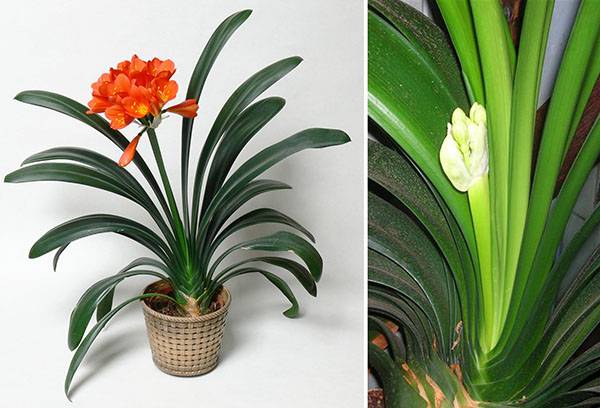

Varieties
At home, three types of clivia are most often found: cinnabar, gardena and beautiful. Nevertheless, the flower is so good that new hybrid varieties are still being bred all over the world.
Table: distinctive features of various types
| Clivia variety | Peduncle height | Characteristics of flowers | Flowering time |
| Clivia cinnabar, or red-orange (Clívia miniata) | 40-50 cm | Rosette inflorescence with 10–20 flowers | February-May, but sometimes blooms at other times of the year |
| Clivia Gardena (Clívia gardenii) | 45-50 cm | 10-16 flowers | Second half of winter |
| Clivia beautiful, or noble (Clívia nobilis) | 30-50 cm | Inflorescence with 40-60 flowers | Second half of winter |
Clivia cinnabar turned out to be a very plastic plant, and on its basis more than a dozen new varieties with flowers of various colors were bred.
Photo gallery: cinnabar clivia, aka miniata, and other types
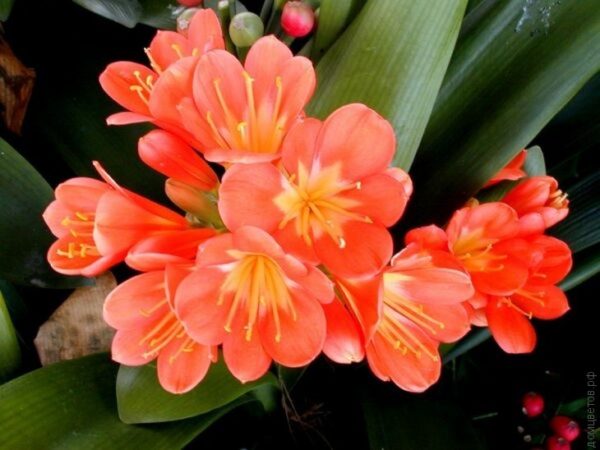

Clivia cinnabar blooms with bright orange-red flowers
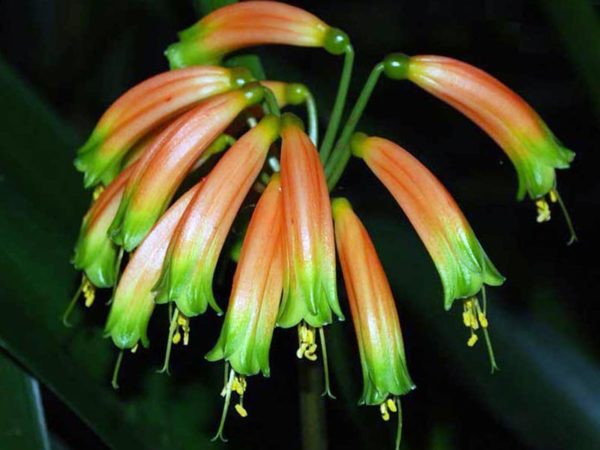

A distinctive feature of Clivia Gardena flowers is a tubular shape and green tips.


Clivia Nakamura Red has bright red flowers
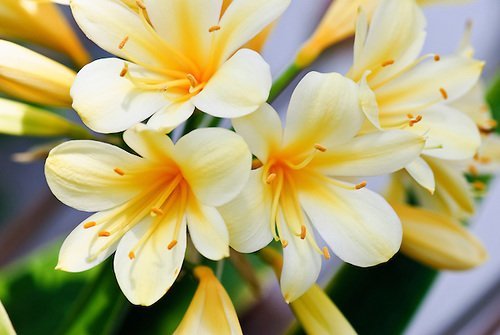

Clivia citrine is a variety of clivia miniata with creamy yellow flowers
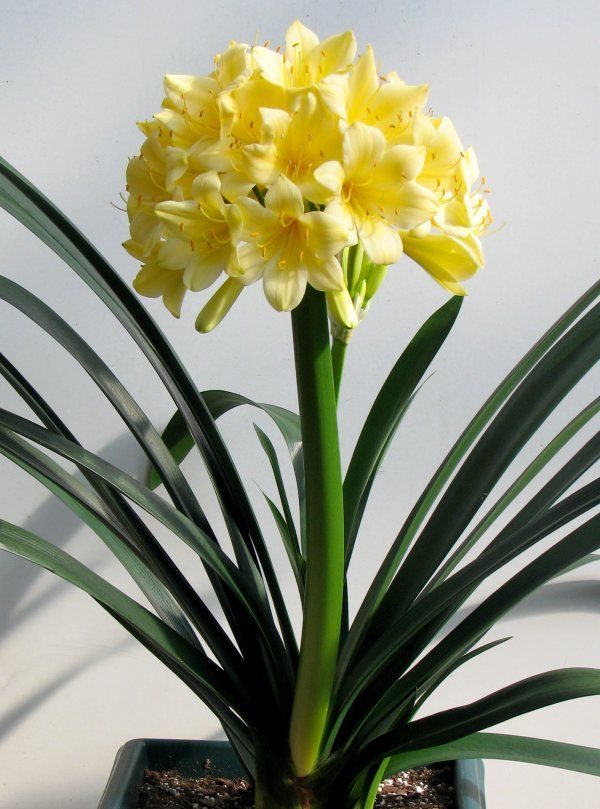

Clivia yellow - one of the hybrids bred on the basis of cinnabar clivia


Clivia noble has drooping tubular flowers of red color with a white tip.
Reproduction
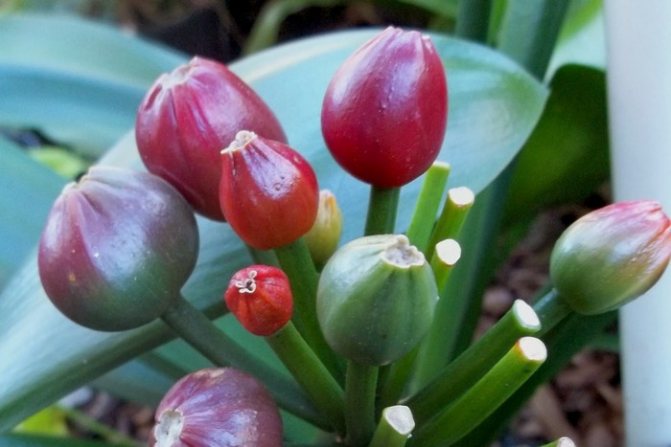

Clivia produces many root suckers. During transplanting, the offspring are separated and transplanted into another pot. Young plants are separated from the mother in the second year of growth, should have at least 4-5 leaves.
You can grow clivia from seeds. If you propagate not a species, but a hybrid, a plant obtained from seeds will not repeat the characteristics of the mother plant. Leaving flowers for seed setting is a risk that the mother plant will not bloom next year.
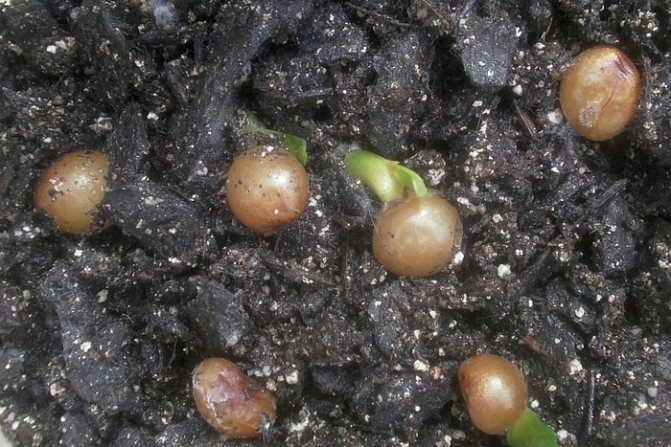

Briefly about the conditions of detention
Caring for clivia does not cause special problems for flower growers. The most important thing for active development and flowering is to provide the flower with diffused light and a reduced temperature for rest in the autumn-winter season.
Table: what it takes for a flower to grow
| Season | Temperature | Shine | Watering | Top dressing | Air humidity |
| Summer | 20 ° C to 25 ° C | Better to put the plant outdoors in partial shade. | Moderate, as the substrate dries | Once every 2 weeks | For clivia, this parameter is not important, therefore, the leaves are washed more for hygienic reasons. |
| Autumn-winter (dormant period) | 12 ° C to 15 ° C |
| Limited, from 1 time per week to 1 time per month | Not required | |
| Winter-spring (from the appearance of the peduncle) | 20 ° C to 25 ° C |
| Moderate, as the substrate dries | Once every 2 weeks |
Where does clivia grow?
The natural habitat for this beauty is the Republic of South Africa, and from this one can immediately draw conclusions about the conditions in which it will grow and bloom well. Although in general, the plant is completely unpretentious, it does not require much attention and cumbersome maintenance. And it has been blooming for more than one year, for which it is called long-flowering and is very, very loved. Therefore, if you are a beginner and are just starting to grow indoor plants, then you can start with clivia. Get a beautiful plant and a supply of enthusiasm.
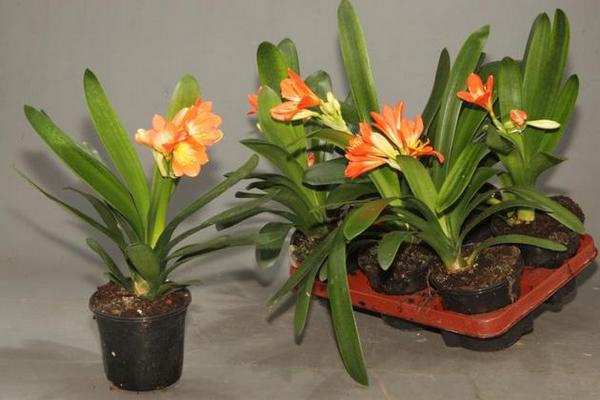

How to care
Clivia is a plant that does not require special skills from a grower. To ensure her a comfortable growth, it is enough to follow the rules of watering and feeding, as well as create certain conditions during rest.
Watering
Clivia is a plant that does not like high soil moisture. Therefore, it should be watered only after the earthen lump dries up. Excess water from the pan should be poured... If you neglect this rule, the roots of clivia can rot.
When the plant enters the resting stage, and the temperature in the room is reduced, watering is practically stopped, it is enough to moisten the soil every 10 days. After flower stalks are formed on the clivia, the plant begins to be watered again as the soil dries.
Tap water must be defended before irrigation. It is important that it is soft enough and free of chlorine.
Air humidity for clivia is not critical. Therefore, it is not required to spray it from a spray bottle.... However, the plant is responsive to removing dust from leaves with a damp cloth.
You can shower the Clevia about once in the summer.
Top dressing
Clivia is susceptible to feeding. They help her to develop intensively and make her outwardly more decorative. Top dressing should be started from the first year of life in the summer.. It is necessary to fertilize clivia during the period of growth and flowering once every 2 weeks, alternating organic and mineral products.
It is best to use organic fertilizers based on vermicompost. It can be Ideal, Giant, Breadwinner and others. For their use, 1 tablespoon of fertilizer is diluted in 2 liters of water.
Mineral complexes are diluted in warm water in a ratio of 2 g of fertilizer per 1 liter. The most commonly used are Ammophos, Kemira, Nitrofoska.
After the onset of the rest period (approximately from the beginning of autumn), feeding should be stopped, and resumed when the flower releases the arrow of the peduncle.
Nitrogen-based fertilizers can delay the emergence of flower stalks. And complexes with a high potassium content have the opposite effect, stimulating the flowering of clivia.
Flowering time
Clivia usually begins to bloom in late winter or early spring and lasts for about a month. When the flower arrow has become high enough (more than 10 cm), you should end the rest period and transfer the flower from an unheated room to a warm and well-lit place..
During flowering, watering of the clivia should be increased and fertilized regularly. For irrigation, it is better to take warm water, the temperature is 3-4 degrees above room temperature. If you do not start leaving on time, the peduncle will be short, and the flowering time will be significantly reduced.
After the clivia is exposed to a bright place, the pot cannot be rearranged or even turned.
What to do to make the clivia release its peduncle arrow and bloom
Usually the lack of rest prevents clivia from blooming.... If in the autumn-winter time you do not reduce watering and reduce the temperature, it is unlikely that it will be possible to make the clivia bloom.
When the arrow appears, the plant should be washed with warm water from the shower, increased watering and start fertilizing. The first feeding is high in potassium (potassium chloride, potassium salt, potassium sulfate).
For the first time, clivia grown from shoots blooms in the second or third year. If reproduction was carried out by seeds, the appearance of peduncles should not be expected earlier than the fourth year of life.
If the clivia does not bloom by this time, it needs a long rest. For this, the plant is transferred to a dimly lit place with an air temperature of no higher than 16 ° C for 3-4 weeks.
Another reason for the lack of peduncles is too spacious a pot: clivia will not bloom until the roots fill it completely.
When the clivia has faded and the peduncle is cut off: a dormant period
It is important for Clivia to create conditions for rest during the winter. At this time, you can take the flower pot out to a glazed loggia or to another cool room. The main thing is that the air temperature is not below + 12 ° C, otherwise the plant may die.
The older the clivia, the longer it will take to rest. It is enough for young plants to rest for two months - from the end of September to November. When the flower is more than five years old, the dormant period should be increased. From this moment, the clivia needs rest for the entire autumn-winter period - from mid-September to early February.
The rest period ends when the peduncle appears.
Can a plant bloom twice a year
It is better to transfer the faded clivia to fresh air - a balcony or a garden. The place for the plant should be shady and windless.
If you want to get the plant to bloom again this year, after a short break in nature, the clivia should be taken to a low-light place and stop fertilizing, and also reduce watering to 1 time per month. The leaves may start to turn yellow, but that's okay. In about a month, wait for a new arrow to appear.
It is possible to achieve flowering 2 times a year only from an adult and healthy plant.
Clivia - description, structure, characteristics. What does clivia look like?
Blooming clivia belongs to the category of the most beloved indoor plants. She not only blooms, but creates with her color a unique bright bouquet that lasts a long time and pleases the owners. Clivia, in its natural conditions, can reach simply incredible sizes, growing a thick and strong stem, however, gigantism is not characteristic of indoor species of beautiful and cinnabar.
It is almost impossible to distinguish them until the time when they bloom. Some experts advise focusing on the size of the plant itself, they say, cinnabar clivia is somewhat larger, but size is a relative concept, so we do not give such a guideline. After all, plants can grow in different conditions and develop in different ways. Beautiful clivia grows up to 40, or even up to 60 flowers on one peduncle, while cinnabar grows 10-20. And the flowers themselves are of different shapes, but more on that later.
Care errors
Despite the fact that the clivia is not capricious, various troubles can sometimes happen to it. It is important to know why they appear and how to fix them.
Table: why the tips dry, the leaves turn yellow, brown spots and other visible defects appear
| External manifestation | The reasons | What to do |
| Leaves turn yellow | Natural aging, when old leaves die off and new ones grow instead | Requires no action |
| Insufficient or excessive watering |
| |
| Few fertilizers | Top dressing during the flowering period is applied once every 2 weeks. | |
| In the case of plant pollination, the leaves turn yellow due to the redistribution of the flower's nutrients to the fruit | Remove fruits and peduncles when they begin to dry out | |
| Anxiety in the form of transplant, transfer, or drafts | Move the pot only if absolutely necessary. | |
| Brown spots on the leaves | Sunburn | Remove the plant from direct sunlight |
| Pale leaf color | Lack of nutrition | Conduct feeding according to the rules |
| Leaves rot | Roots were damaged during transplant | Watering is stopped until the earthen coma is completely dry |
| Brown leaf tips | Excess moisture | Water more moderately, remove water from the sump |
Clivia. Growing problems:
- Blanching foliage occurs when there is a lack of fertilizers in the soil.
- Lack of flowering in a place that is too hot or too dark, without a full rest period.
- White and red spotting on foliage due to too much sunlight.
- Dry or brown leaf tips with waterlogged leaves.
- The peduncle stops growing because the dormant period was very prolonged. Try watering the plant with warm water up to 40 ºC.
- Peduncle is too short if the room is too cold and dry.
- Yellowing of leaves associated with watering too abundant, insufficient or too frequent. It may also be due to a lack of nutrients in the soil.
- The buds freeze in development if the room is cold.
Views: 736
Diseases and pests
Pests rarely annoy the clivia, but in order to cope with them, it is important to notice the onset of the attack in time and prevent them from multiplying. If there are too many pests, it will be very difficult, and sometimes pointless, to fight them. The most common enemies of clivia are scale insects and mealybugs, rot.
The shield, also known as the shield aphid, has a protective waxy shield that protects the pest's body. The adult aphid is motionless, but the larvae can crawl all over the flower. Mealybug forms colonies.
Photo gallery: enemies of clevia
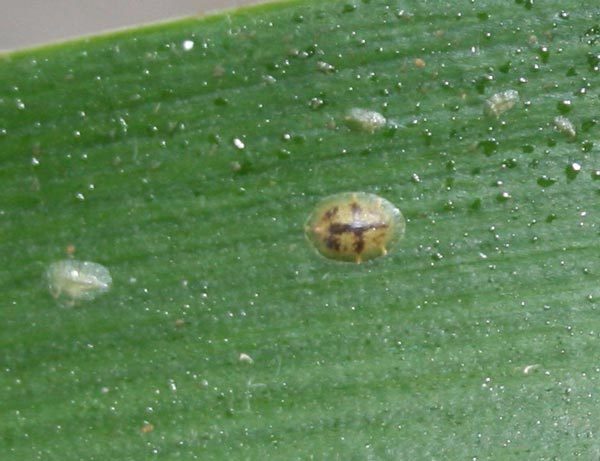

Scale sign - red sticky spots and brown plaques on the leaves
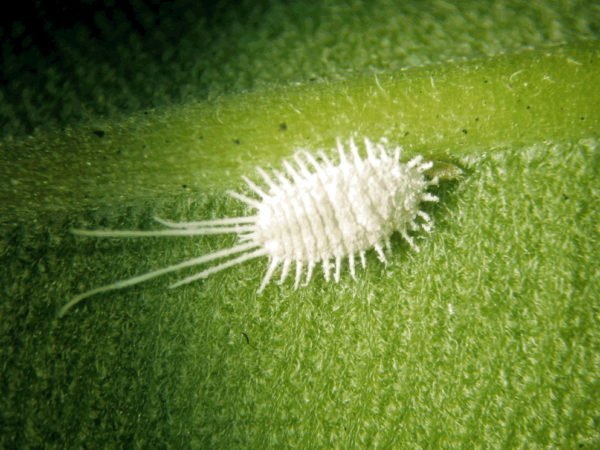

The mealybug forms a kind of cotton bloom on the leaves.


The most common disease of clivia is rot
Table: flower treatment for diseases and pests
| View | What does it look like | What to do |
| Shield (shield aphid) | Dark spots-growths on the leaves | The larvae are destroyed by washing the flower with a soap solution (a small amount of kerosene or denatured alcohol can be added to it for efficiency). Adults are removed with a damp soap swab, but after that the plant must be sprayed with an insecticide. |
| Mealybug | Looks like white cotton wool on the leaves | A small number of pests can simply be removed with a damp swab, but if there are too many of them, it is necessary to spray the clivia with insecticide weekly until it recovers. |
| Rot | Leaves turn yellow, the plant begins to die off | The reason is most often in the defeat of the roots, therefore, the damaged roots should be cut off, the cuts should be sprinkled with crushed coal and the plant should be transplanted into a new soil. |
Soil contamination is the most common cause of pests and diseases, so do not forget to disinfect it before planting or transplanting a plant.
Origin
Clivia is a member of the Amaryllis family. Their natural habitat is the tropical rainforests of the southern African continent. Perennial is distinguished by wide, long leaves connected to a socket.
The flowers are oblong, bell-shaped, united in a crown-shaped inflorescence. The peduncle is long, growing from the middle of the deciduous rosette.
Bloom every year from February to March... With good growing conditions, re-flowering can be achieved.
Interesting fact! Amaryllis plants have a bulbous root system, which clivia lacks. The flower has dense, elastic roots, diverging from the beginning of the deciduous rosette.
Omens and superstitions are closely related to clivia.It is believed that the plant should not be kept at home by married couples, since its presence does not contribute to a favorable environment in the house. Fortunately, this opinion is not supported by anything.
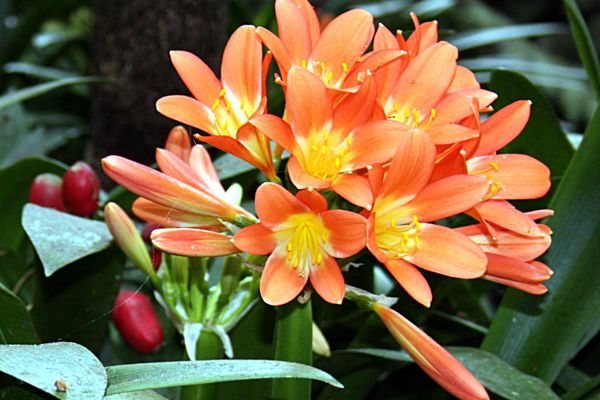

Florist reviews
My flower calmly transfers all permutations, although I read that he does not like to be carried. I water it like everyone else - in the winter once a week, in the summer - two. I try not to overflow. Fertilizer is universal. From time to time it is necessary to wipe the leaves from dust. Not only because the plant looks ugly, but also because it is harmful for it. You can sometimes spray, but this is not important. My mother and I have clivias for 5–6 years, I have been blooming for 3 years, for some reason she still has not. This is a mystery to us.
Bastet
... Clivia is a virtually problem-free flower! Clivia can bloom in yellow-white, bright orange or red flowers that look like bells. And these flowers are not single, but are in inflorescences, often there are about thirty flowers at once! Extraordinary beauty! This plant is undemanding to moisture, only sometimes I spray its leaves, well, I wipe them to remove dust. But when the clivia blooms, it is better not to move or rotate the pot with it at all. And the transplant should be carried out only when the roots are visible from the drainage holes below.
Murmur
Hello, my dear color lovers! My orange beauty Clivia has blossomed the other day. She is so bright, sunny! Twice a year it pleases me with its flowering. She "lives" on the balcony. Only in the hot summer months I bring it into the room and put it on the windowsill.
irulchik
They gave me this flower for my birthday (about 7 years ago). In general, I love flowers, but this one immediately sunk into my soul, thanks to its stunning flowers. Over the years, I have independently determined how to properly care for him, since there are some subtleties in this. So, tips for caring for clivia: 1) Watering only loves when the soil dries up ... 2) When a peduncle appears, it is advisable to water it a couple of times with warm water (about +40 +50 degrees) - this will help the peduncle grow higher and rise above sheets. 3) After flowering, wait 2-3 weeks and cut off the peduncle and - this is important !!! - transplant a flower. Take it out of the pot, cut the roots a little (I cut it with a knife) ... If you do this, then I guarantee that the flower will bloom for you the second time a year! 4) Location - East window only. On other parts of the world it grows worse and may not bloom at all. Flowering, by the way, lasts almost 20-25 days. I have it once every six months. And it also gives children. I definitely recommend it!
vergo
What you need to know about boarding and transferring
When preparing for planting clivia, take care of the choice of a pot. It should be high and deep, with drainage holes. This is due to the fact that the plant has powerful roots that grow deep into the soil. It is better to purchase a ceramic pot, it is more stable, slightly larger in size than the previous one - the difference should be literally a couple of centimeters. In a cramped pot, clivia feels much more comfortable and blooms more readily.
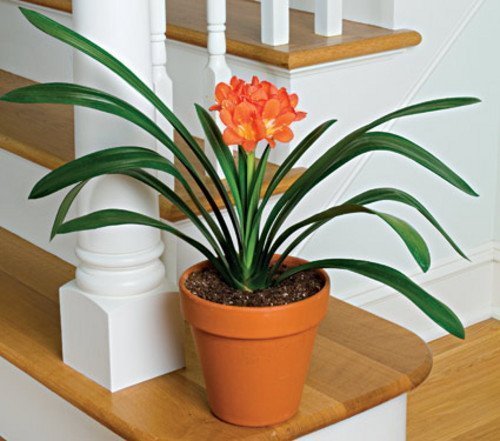

A tall pot is suitable for planting clivia.
The soil is loose, light, well permeable to moisture and air, slightly acidic - with a pH of about 6. Most often, gardeners use this mixture for planting:
- Sod land - 2 parts.
- Leaf humus - 1 part.
- Peat - 1 part.
- Perlite or coarse sand can be added as a baking powder, and charcoal acts as an antiseptic.
Only young clivias are transplanted annually. It is better not to touch adult plants for 2-3 years. It is necessary to transplant them only if the roots have grown through the drainage hole, or the plant is sick.


Only young plants should be replanted annually.
The transplanting process begins only after the flowering of the clivia.
Step by step process
- Pour a layer of drainage into the new pot so that it completely covers the bottom.Then add an earthy substrate.
- Remove the plant carefully from the old pot. It is not necessary to shake off the ground by force. Your task is not to harm the fragile roots. Injured roots can kill the plant. Cover any damage immediately with crushed coal or ash.
- Transfer the clivia into the prepared pot, adding the remaining moist soil to the sides.
- Try not to deepen the root collar.
- After transplanting, do not water the clivia for several days; you can only lightly spray the top layer of the substrate. The wounds on the roots will heal during this time.
- Then continue the watering process as usual.


Clivia is transplanted by the transshipment method
After transplanting, try to place the plant exactly as it did before. It is not worthwhile to turn the clivia with different sides to the light source every now and then.
Table: conditions for successful growing of a plant in indoor conditions, depending on the season
| Spring Summer | Autumn winter | |
| Lighting | Clivia loves good lighting, but on hot summer days she needs to be shaded from direct sunlight. Otherwise, clivia leaves can get burned. In the summer, you can take the plant out into the fresh air, it grows beautifully in the garden and on the balcony. | In autumn and winter, clivia tolerates partial shade well; it does not need additional lighting. |
| Temperature | The most comfortable temperature for the development of clivia during the active growing season is - 20-25 ºC. | The plant needs coolness (12-15 ºC) starting in October. When the clivia begins to wake up after a dormant period and releases a flower arrow, the temperature should be raised to about 20 ºC. |
| Air humidity | Moisture levels are not significant for clivia. It perfectly tolerates dry indoor air. When dust appears on the leaf blades, wash it off by wiping with a damp sponge. This amount of moisture will be enough for the plant. | Additional hydration of the clivia is not required. |
Clivia: flower photo gallery
Poisonousness and useful properties
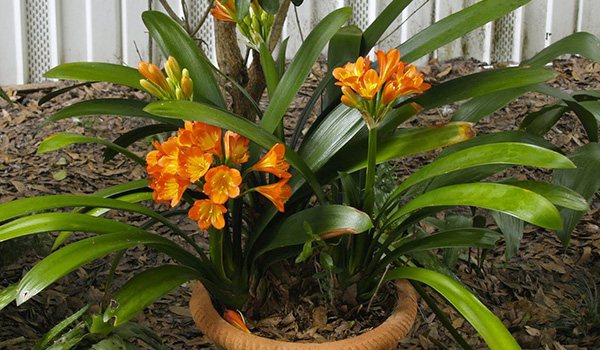

Despite the outward beauty, clivia is considered a poisonous plant. If the root and leaves are damaged, you can detect yellowish discharge - these are alkaloids, dangerous and poisonous substances.
Their ingress into the human body causes paralysis and even death. Concerning culture should be placed on windowsills or in other places so that small children or pets cannot reach it.
Important! After procedures for caring for a flower, you must thoroughly wash your hands with soap.
In addition to alkaloids, in clivia juice contains substances such as lycorin and clivatin, which allows the use of culture in pharmacology. Raw materials from this plant are used for the manufacture of various medicines that improve blood circulation.
Bloom
Blooming clivia is an exciting and unforgettable sight. Young specimens delight the owners once a year, older ones - up to 2 times. During budding, you cannot turn the pots and change the temperature abruptly. This is fraught with the fall of unopened buds.
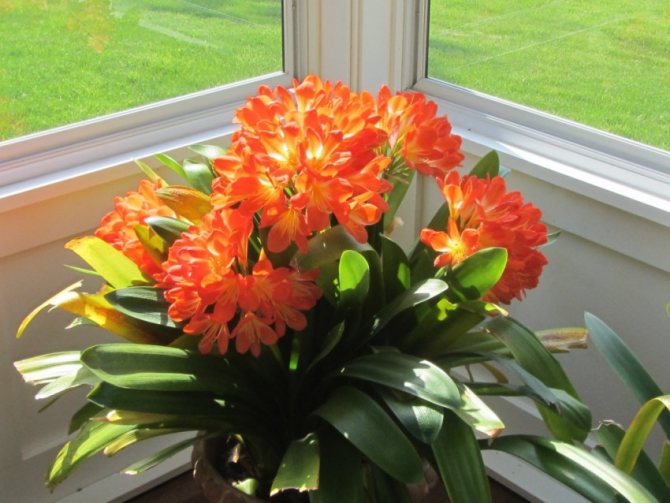

After the clivia has bloomed, continue to water and fertilize the soil. The correct content allows for re-flowering.
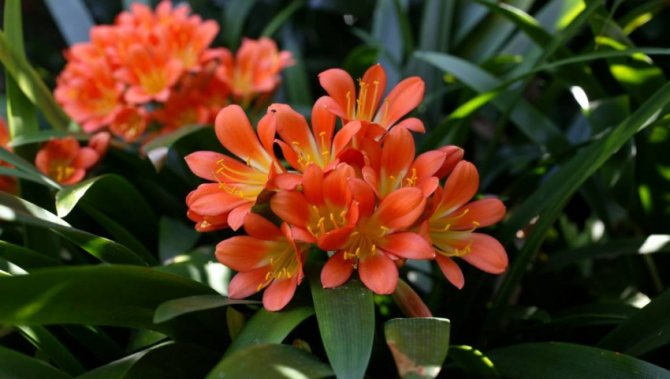

Experienced florists know one trick - artificial wintering. If flowering does not occur, you can try transferring the clivia to a dark, cool area in the summer. After a few weeks, a peduncle appears.
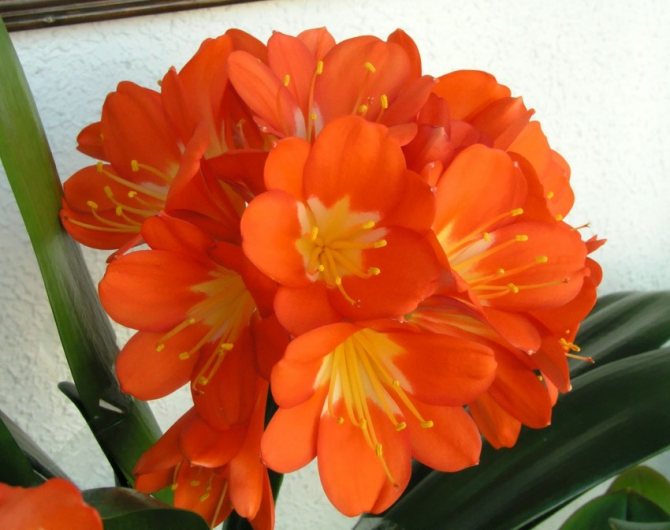

Can I keep at home
The plant in question for a long time pleases visitors with abundant flowering and lush greenery, its main disadvantage is considered toxicity... In this regard, the pot with the culture must be installed higher so that small children cannot reach it.
Clivia pleases households with beautiful flowers for a long time (the flowering period of this culture exceeds 1 month). There are some signs and superstitions about this plant. So, feng shui experts believe that this flower on the windowsill neutralizes negative energy entering the room from the street.
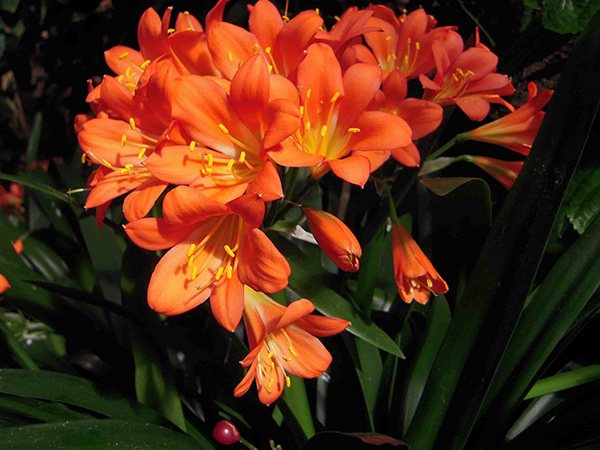

Features of seasonal care
Clivia is special in that caring for her depends on the season and growth activity. When the plant blooms (this is somewhere in the middle of winter - the beginning of spring, depending on the variety), it needs abundant lighting, sufficient watering, and regular feeding. During this period, the culture becomes very sensitive to cold air currents. It should be placed in a warm, draft-free place.
In summer, clivia grows actively, but does not bloom. She also needs moderate watering, good lighting, and top dressing. From the beginning of autumn, a phase of rest begins. The plant must rest and gain strength. Watering is significantly reduced, feeding is stopped. You don't need a lot of light. The pot can be placed in partial shade.
Benefit and harm
Clivia is a very cheerful plant. Its bright flowers, juicy leaves create a wonderful mood and a feeling of harmony, and it is also believed that the presence of clivia in the house normalizes the circulatory system.
The roots and leaves of clivia cinnabar are actively used in pharmacology., and the indigenous people of Africa use clivia for fever and as a pain reliever for poisonous snake bites.
IMPORTANT! It should be remembered that parts of the plant are very toxic! Transplant the plant only with gloves! Do not try to experiment with clevia treatment, it is very dangerous!
However, with the simplest precautions and proper care, clivia will delight you with beautiful flowers and fresh, vibrant leaves for a long time.
Transfer
Moving old plants in a new container is carried out only as a last resortwhen the roots are strongly intertwined with each other or began to look out of the drainage holes.
During such operations, the sensitive root system can be damaged, which will lead to death of a flower. Transplanting young clivias held annually during the first three years of life.
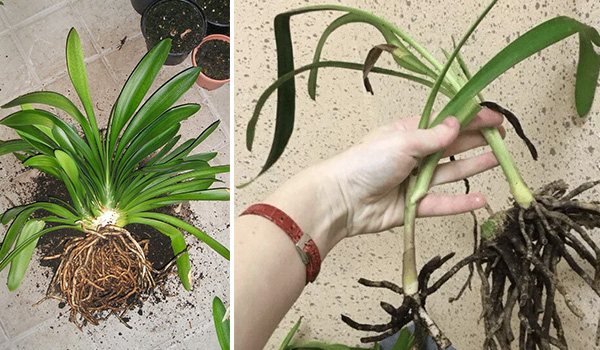

The plants are moved to a new larger pot along with a lump of earth. The pot must have drainage holes, it disinfect with a solution of potassium permanganate and pour a small layer drainage from small stones or pebbles.
After that, the earthen lump is sprinkled with a new nutrient substrate and the flower is watered. Old crops over 10 years old are not transplanted... In the flowerpot, only the top layer of the nutrient substrate is replaced.
This video shows how to properly transplant a beautiful clivia.
What to do after the petals have wilted
At the end of flowering, wilted inflorescences remain on the culture, which hold well on the stems. Flowers you just need to cut with scissors... Such operations are carried out with special care so as not to hurt the peduncle.
Damage to the strain can lead to many undesirable consequences, such as diseases. Completely shriveled stem neatly removed from the leaf rosette, it is easily pulled out.


When the clivia has faded, the rules for leaving change as follows:
- we reduce watering;
- protect the plant from cold air streams (drafts);
- spray the culture, wipe the leaves with a damp soft cloth.
Advice! It is not recommended to feed the flower during the dormant period - excess nutrients only deplete the culture.
1. Seven Secrets of Success:
| 1. Growing temperature: during the period of growth and flowering, the most optimal temperature range is from 18 to 25 degrees Celsius. After flowering, a dormant period begins, which the plants should spend in a cool place. |
| 2. Lighting: Clivia tolerates partial shade well.Sun exposure on leaves is permissible only in the morning and evening hours; during the day, plants should be protected from sunlight. |
| 3. Watering and humidity: when the plants are actively developing and budding, they carry out abundant and regular watering with a slight drying of the substrate by 2 - 3 cm in depth. When kept cool, the frequency of watering is reduced so that the soil in the pot does not completely dry out. The flower prefers rooms with high air humidity. |
| 4. Features of the: This bright, showy beauty is not suitable for growing by novice growers. For the onset of flowering, plants need a cool dormant period. From the moment the buds appear, you should not change any conditions of detention - clivia can throw flowers. |
| 5. Priming: very loose, nutritious soil with a slightly acidic pH, allowing the roots to breathe. |
| 6. Top dressing: as soon as the plants begin to form peduncles, it will be necessary to regularly apply mineral fertilizers, feed them twice a month. Many organic substances can be used as fertilizer. During the rest period, feeding is not carried out. |
| 7. Reproduction: the flower multiplies by division during transplantation and growing from seeds. |
Botanical name: Clivia.
Clivia at home - family... Amaryllidaceae.
Homeland of the plant... The plant originates from South Africa.


Description of what it looks like... Clivia is a small genus of just 4 species of evergreen perennial herbaceous plants. A distinctive feature of the plant is that, unlike most plants of the Amaryllis family, it does not have bulbs. The bases of the leaves simply grow together very tightly, but do not form a bulb, but are located at the top of the rhizome.
Leaves dark green, 40 - 60 cm long, belt-like, glossy, as if nested in each other - they are located opposite and form a false stem.
At the end of winter, thick leaves appear among the leaves. peduncles up to 45 cm high, each carries an inflorescence - an umbrella, consisting of 15 - 20 delicate, funnel-shaped flowers, each with a diameter of 5 - 8 cm. shades of colors include yellow, bright orange, red, apricot, white. The center is usually yellow.
The flowers have a mild, but very pleasant aroma. Each plant can emit 2 - 3 peduncles.
Fruit when ripe, they become bright orange. The root system is represented by yellow or light brown, thick, brittle roots.
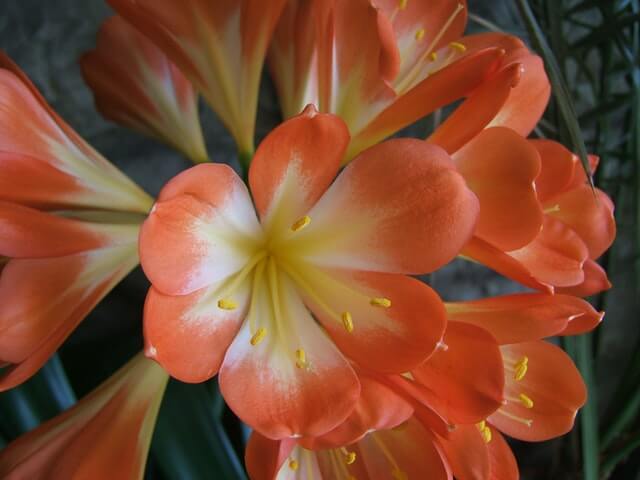

Currently created variegated or variegated varieties with leaves with yellow longitudinal stripes on the leaves.
↑ Up,
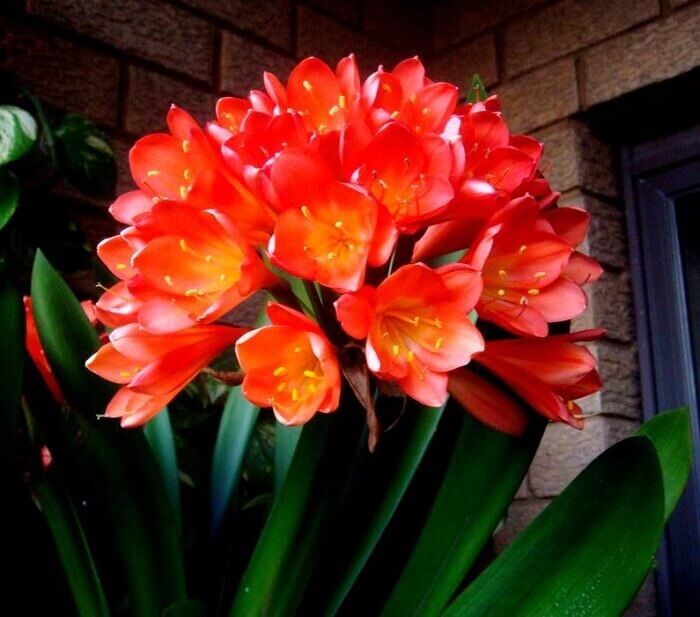

Height... Clivia can grow to 50 - 70 cm... in height. The plant develops relatively slow and during the growing season can form 5 - 10 leaf plates.
The final size of the plant will depend on the variety and conditions in the house.
↑ Up,
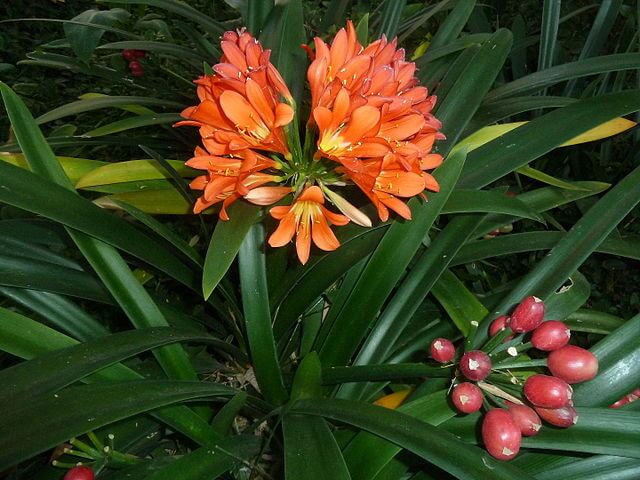

Care Tips
Features of watering and feeding
The plant does not like excessive moisture, so moderate watering is needed. Moisten the soil only after the top layer of the substrate in the container has dried. Clivia herself warns that if you overdo it with watering, the tips of the leaf blades acquire a brown tint, and the base begins to rot. Stop watering the plant, and when the soil is completely dry, start watering the clivia according to the rules.
Moisten the substrate once a week with soft water. To do this, tap water must be boiled and allowed to stand for a day. During the formation of buds, the number of waterings should be increased. Do not allow excessive moisture, if water appears in the pan during watering, be sure to pour it out.
For clivia to bloom brightly and abundantly, it requires a large amount of both mineral and organic substances. Alternate the application of a different fertilizer every two weeks during the spring / summer period.Do the last feeding a month before the "sleep" period - at the beginning of September.
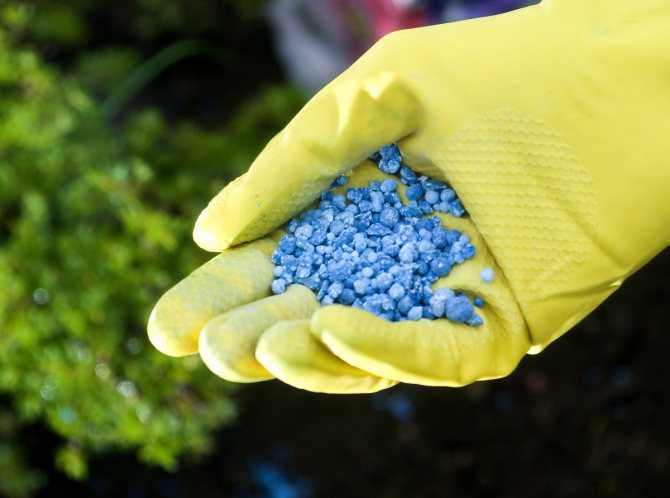

Add fertilizer to irrigation water
A good result is given by the use of complex fertilizers for flowering plants, for example, Fertika or Agricola. For the introduction of organic substances into the soil, the Biohumus preparation is suitable. Add a few drops of liquid fertilizer to the water for irrigation or a teaspoon of granulated fertilizer per 2 liters of water (the concentration of different drugs is different, so follow the manufacturer's instructions on the package). Apply fertilizer only to wet soil, otherwise you can burn the delicate roots of the clivia.
Dormant period
There is no need to feed the plant during the clivia resting period, which begins around October. You should also reduce the frequency of watering several times, moisten the soil only if absolutely necessary, if the earthen lump is completely dry. This period lasts in different ways, the older and larger the plant, the longer it needs a dormant period.
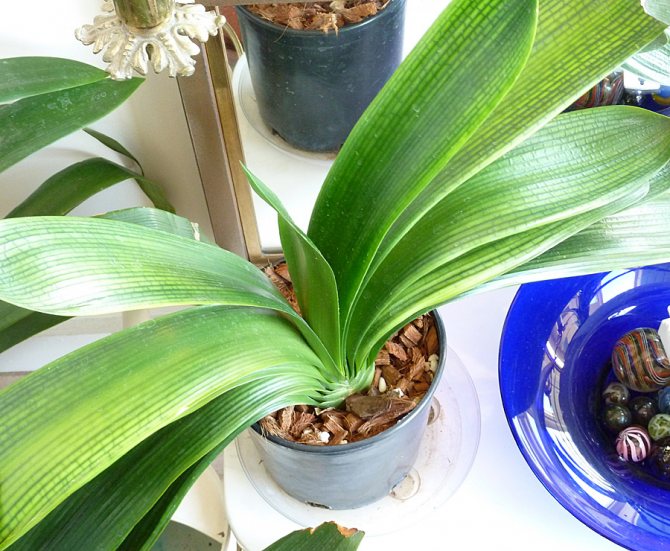

The older and larger the plant, the longer the rest period it needs.
Flowering period of clivia: how to make an African beauty bloom
To obtain abundant flowering, a dormant period of one to two months is required. The plant itself will tell you when it is over: the clivia will throw out the peduncle. This moment cannot be missed, since additional conditions must be created for the flowering clivia.
First, increase the temperature to + 20 ° C. Secondly, the number and volume of irrigation should be increased, avoiding stagnation of water. Clivia doesn't like to be disturbed, turned, or rearranged during flowering. Therefore, all of the listed procedures should be done before the buds appear.
Clivia usually blooms in January or February, lasting approximately three to four weeks.
If flowering has not come or the growth of the peduncle has stopped, then you have not provided your beautiful clivia with coolness and partial shade during the "sleep" period. The situation can be corrected. To do this, move the clivia for a month in a cool shady place, and it can bloom even in spring.
The second reason for the lack of flowering is the too spacious container in which the clivia is planted. Wait until its roots are completely entwined with an earthen ball, and the plant will certainly delight you with abundant flowering, but already in the next season.
When the clivia has faded, cut the flower stalk and give it another small rest period, transfer it to a cool but bright place, for example, on a glassed-in loggia. When spring comes, start feeding the plant. The place for keeping the clivia at this time should be warm with a temperature of about + 25 ° C.
Clivia blooms for about a month.
Table: mistakes that flower growers make in care, and how to fix the situation
Florists consider clivia to be a rather unpretentious plant, but despite its unpretentiousness to the conditions of detention, it can suffer from improper care.
| Sign | Cause | How to fix |
| Leaves turn yellow and dry. | Natural aging process. | There is no need to take any measures, new leaves will grow instead of dead leaves. |
| Lack of watering or too much watering. | Remove the plant from the pot and check the roots. Repot the clivia by removing the rotten roots and reduce the amount of watering. | |
| The plant does not feel well after moving to a new location or as a result of transplantation. | Try not to disturb the plant (or do it as little as possible), and do not rotate or transfer the clivia to another place during the flowering period. | |
| On the leaf blades, spots of a brown or light shade appeared. | Clivia suffered a sunburn. | Shade the flower out of direct sunlight. |
| Leaves are pale green. | Insufficient nutrition. | Feed regularly, alternating organic and mineral complex fertilizers. |
| Leaf blades rot | Roots damaged during transplantation. | Stop watering until the potted medium is completely dry. After 1–2 days, resume watering, following the procedure correctly. |
| The tips of the leaves turn brown. | Excess moisture. | Reduce the amount and amount of watering. |
Varieties
In its natural habitat, the plant reaches gigantic proportions. At home, this is rarely seen. Clivia Cinnabar and Noble live on our windows more often than others. Even experienced flower growers often fail to determine which variety is shown in the photo of clivia.
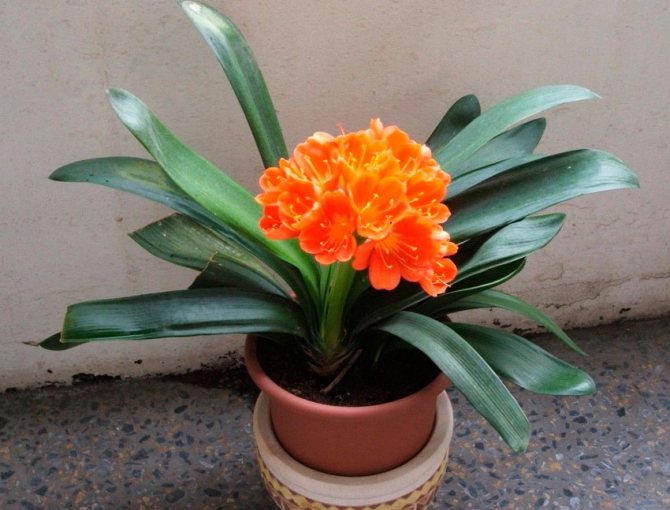

The differences lie in the inflorescence: the Noble one has up to 60 pcs. tubular flowers, at Cinnabar - no more than 20.


Watering
When moistening the soil, you should adhere to moderation to avoid the appearance of rot on the roots. It is recommended to inflow water only after the upper level of the substrate has dried.
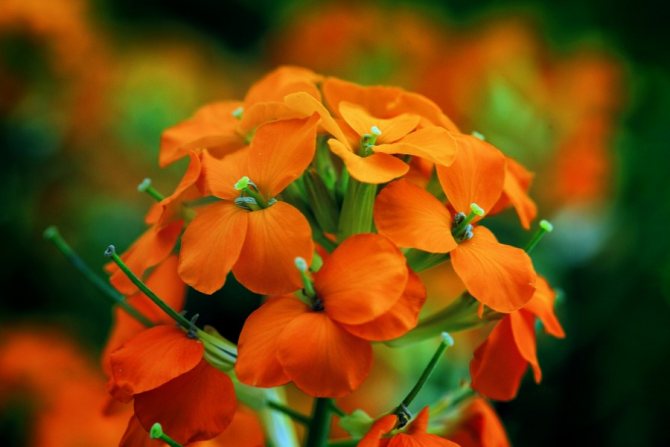

During the period of bud ovary and their subsequent flowering, the amount of moisture slightly increases. Water for irrigation should be settled or filtered with a wound temperature or slightly more than indoors.
Tip: Water your crop once every 30 days in winter.

